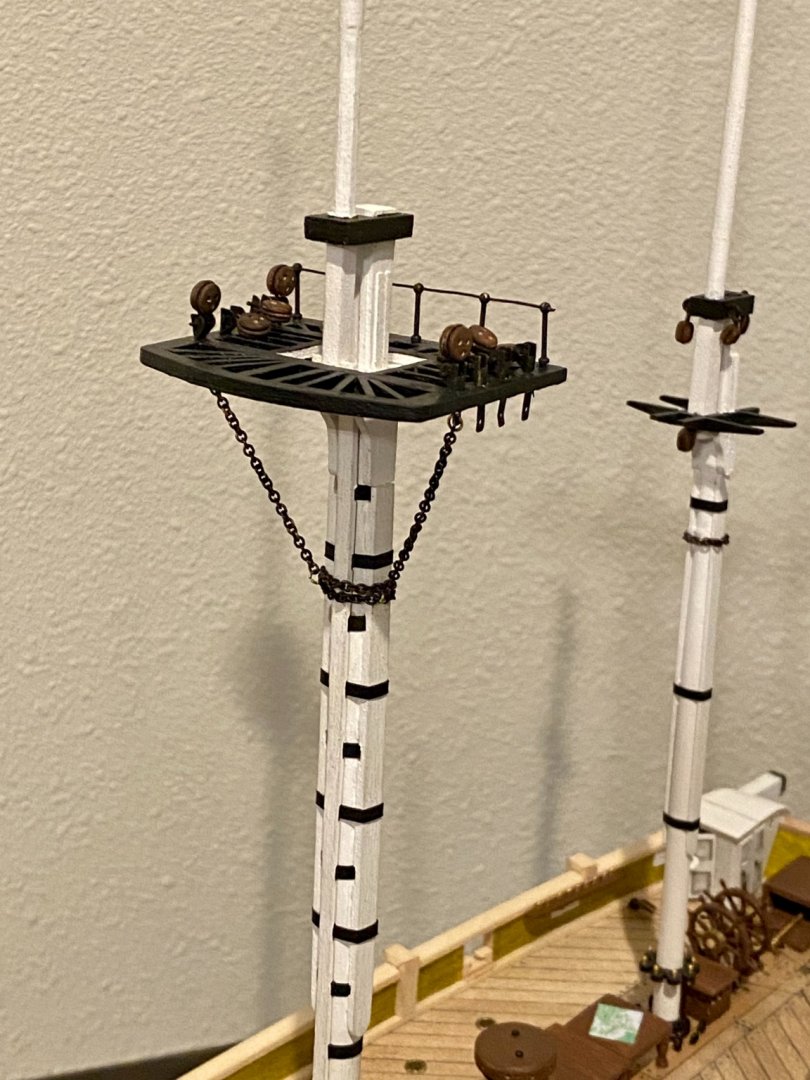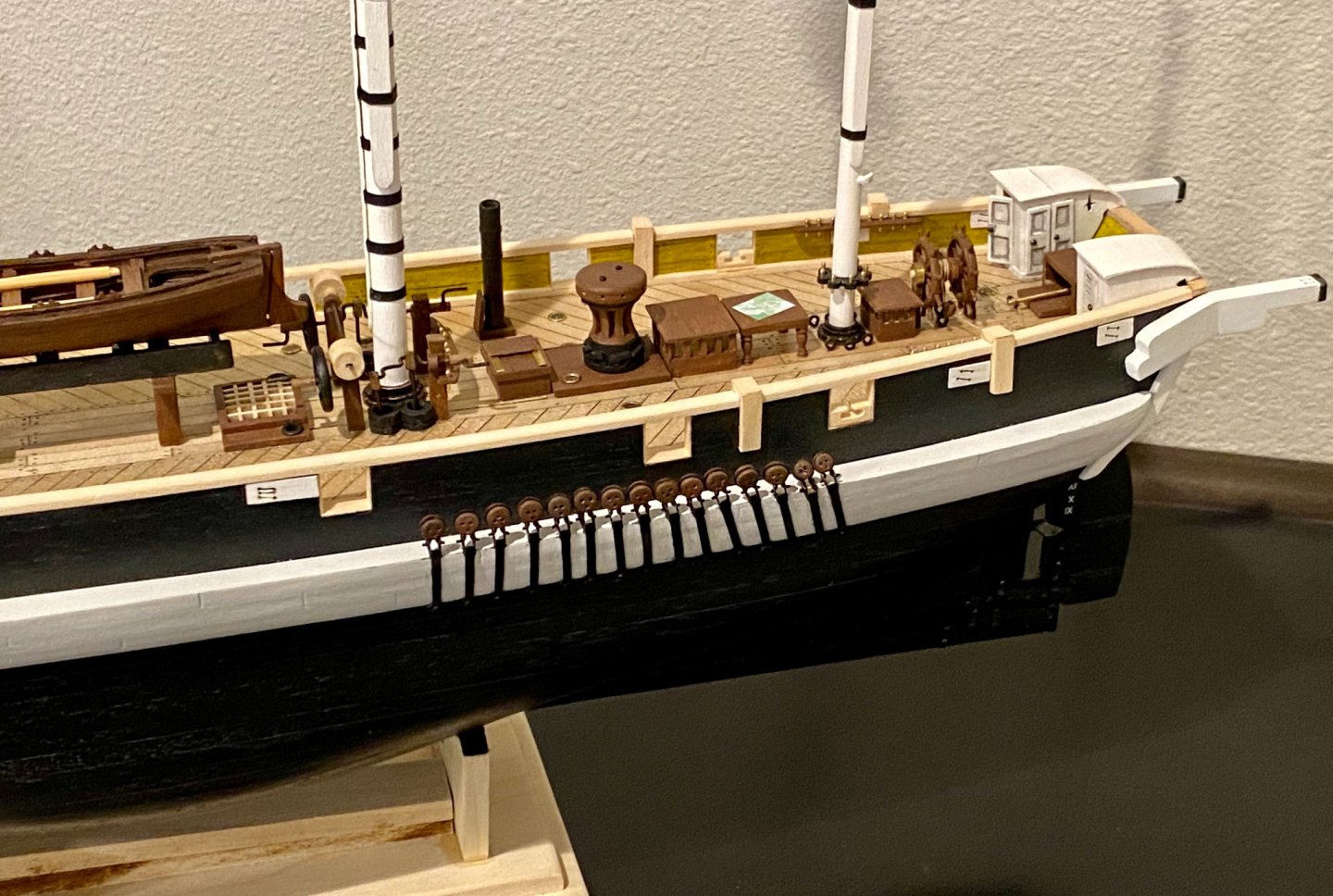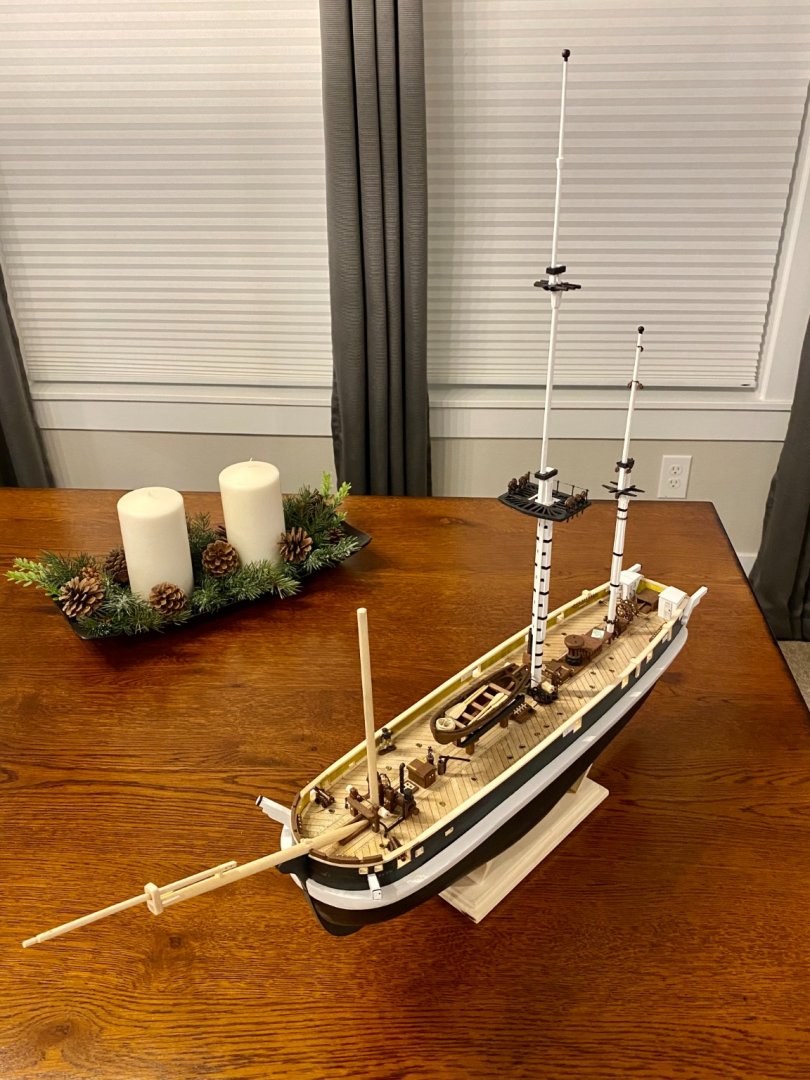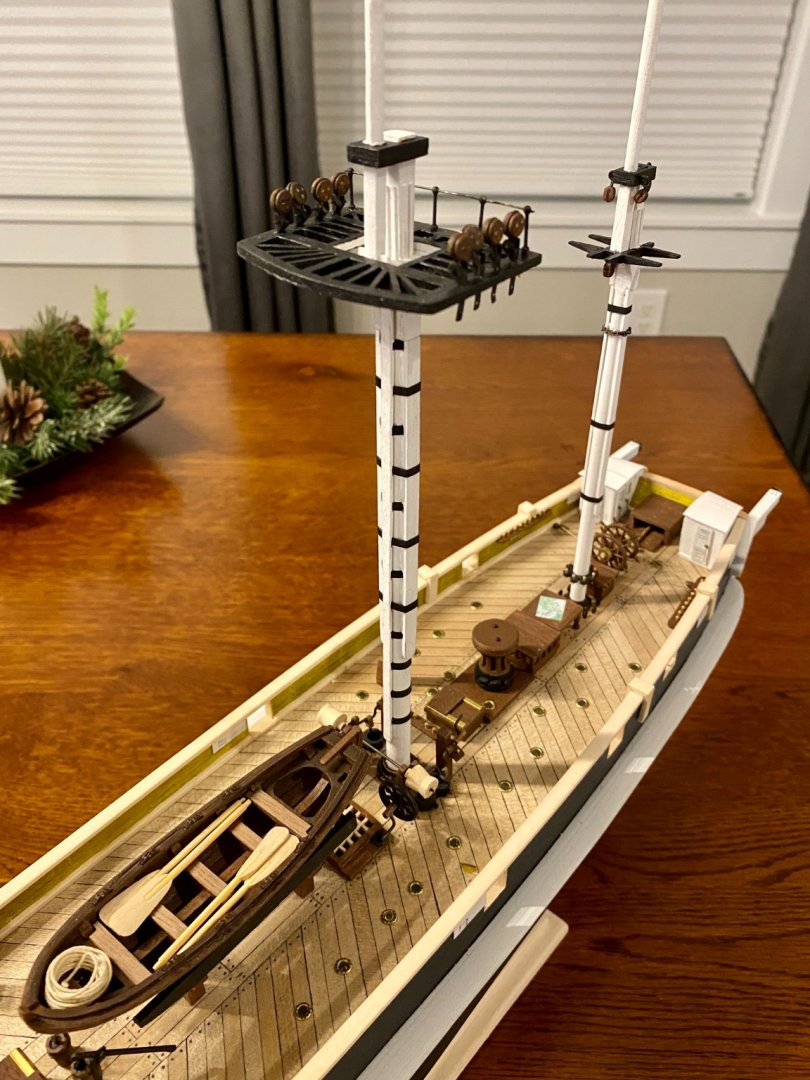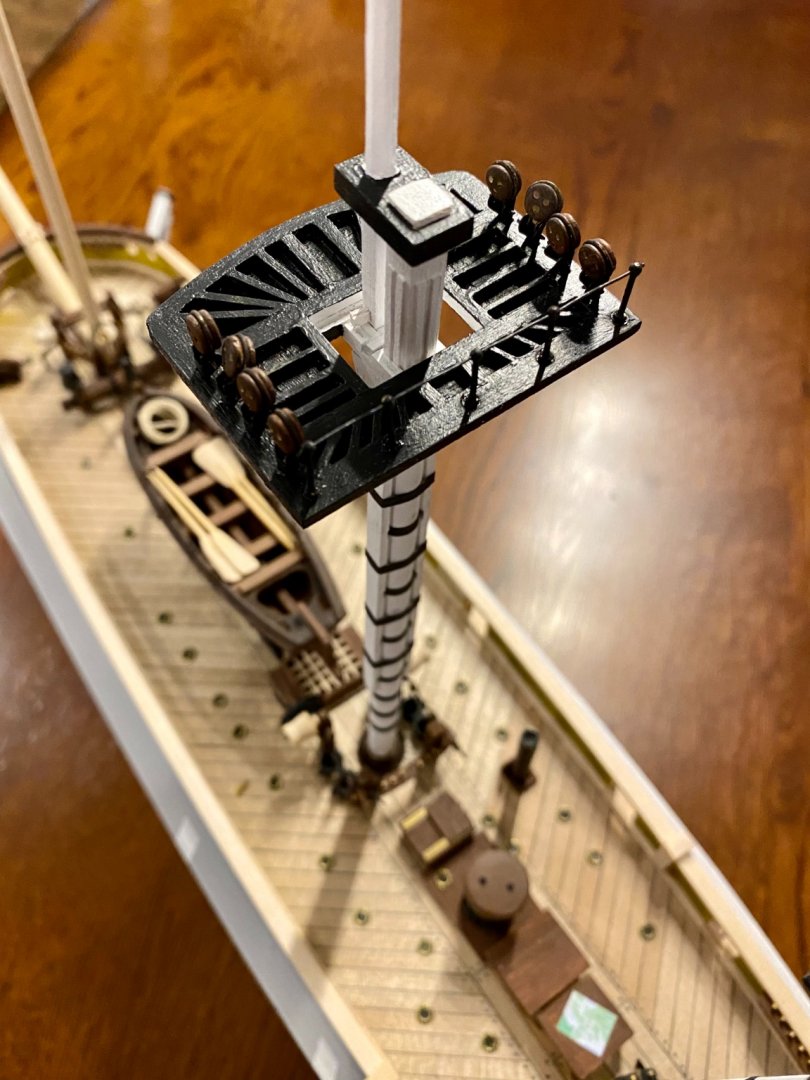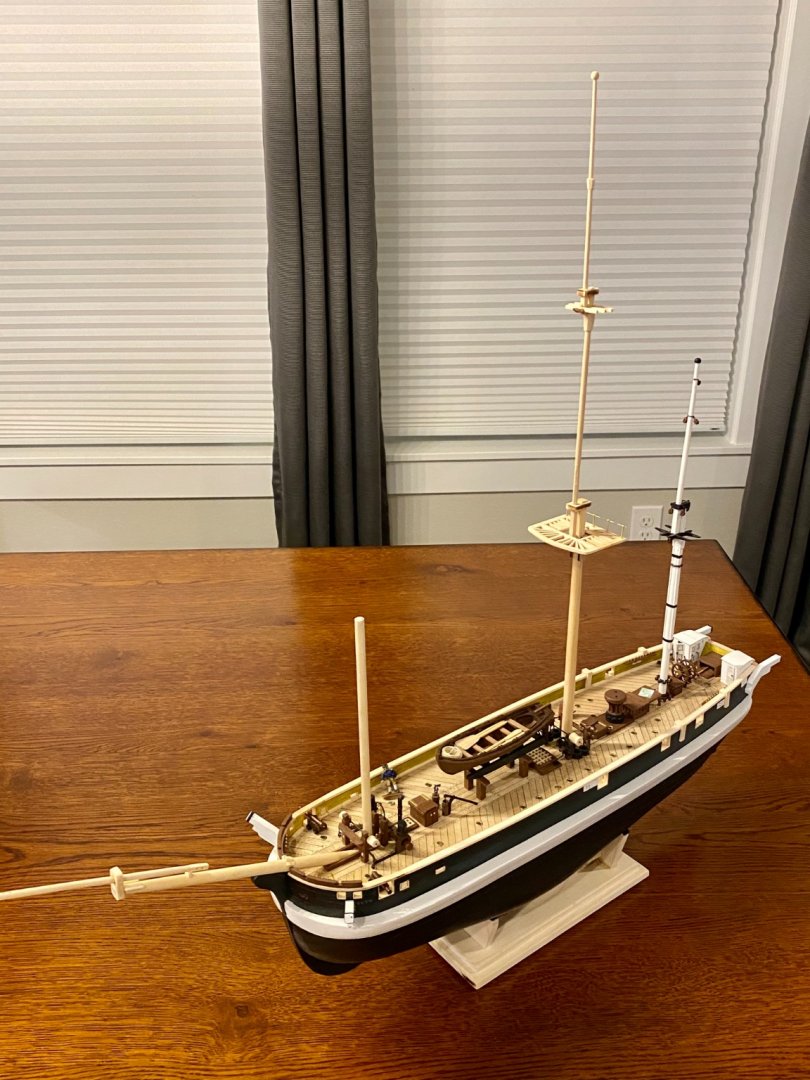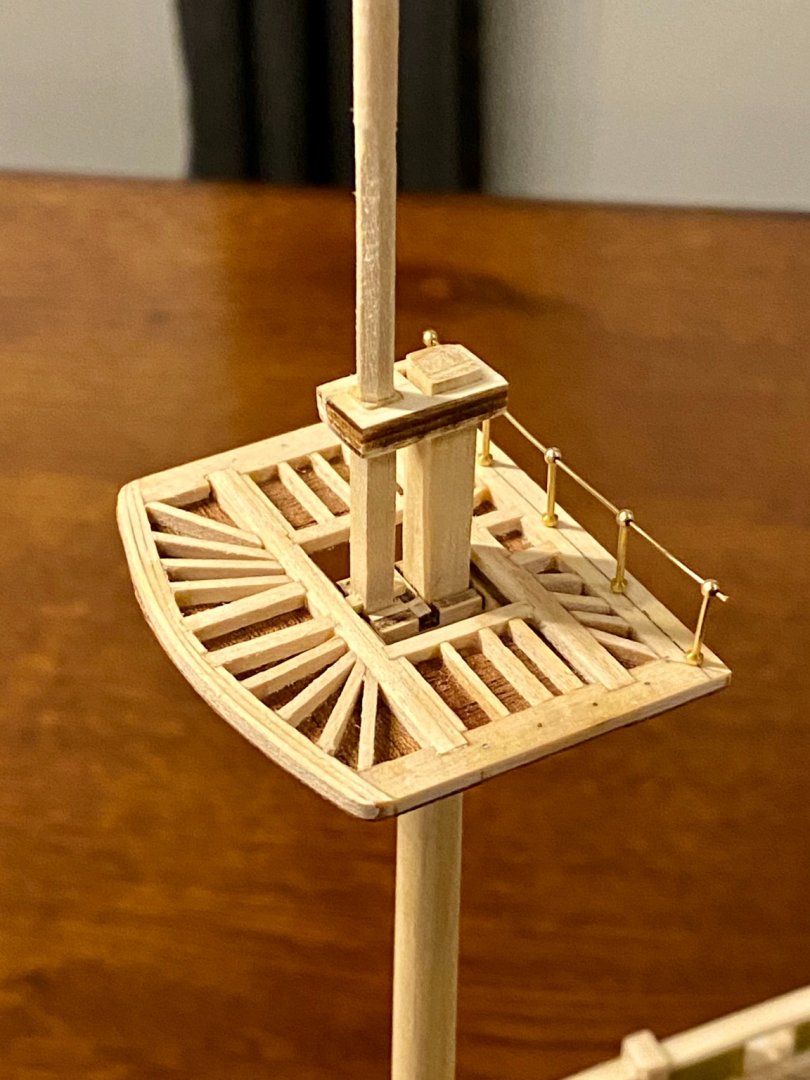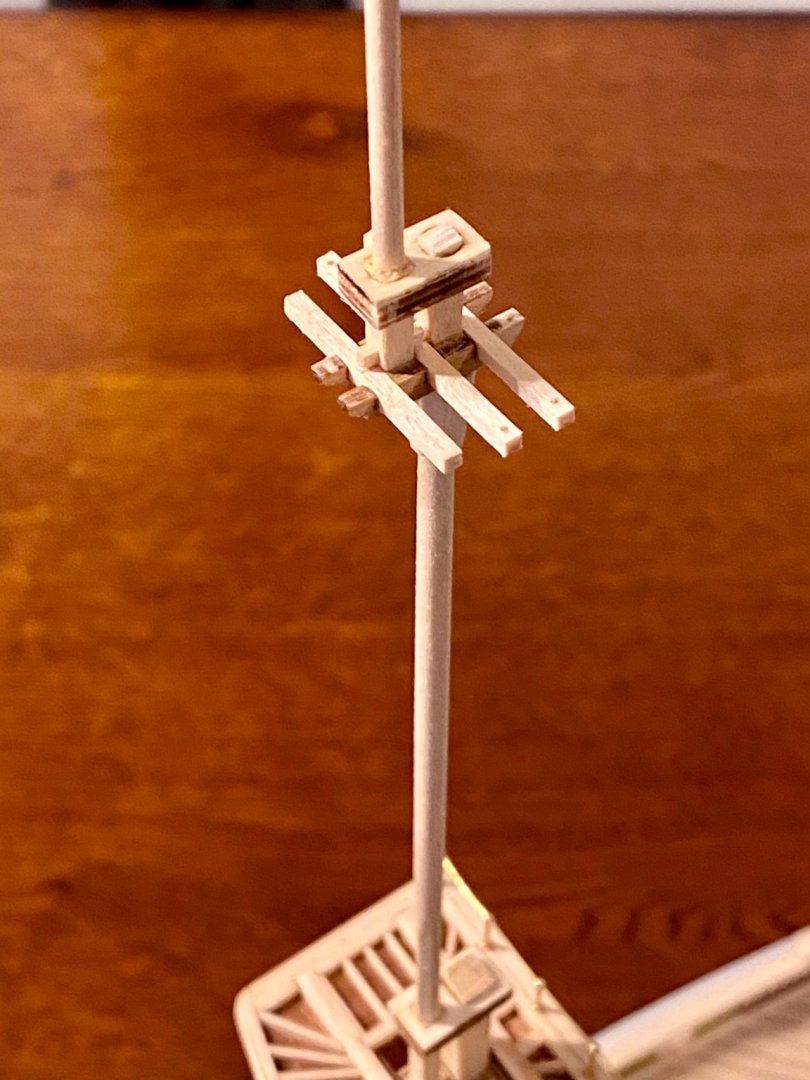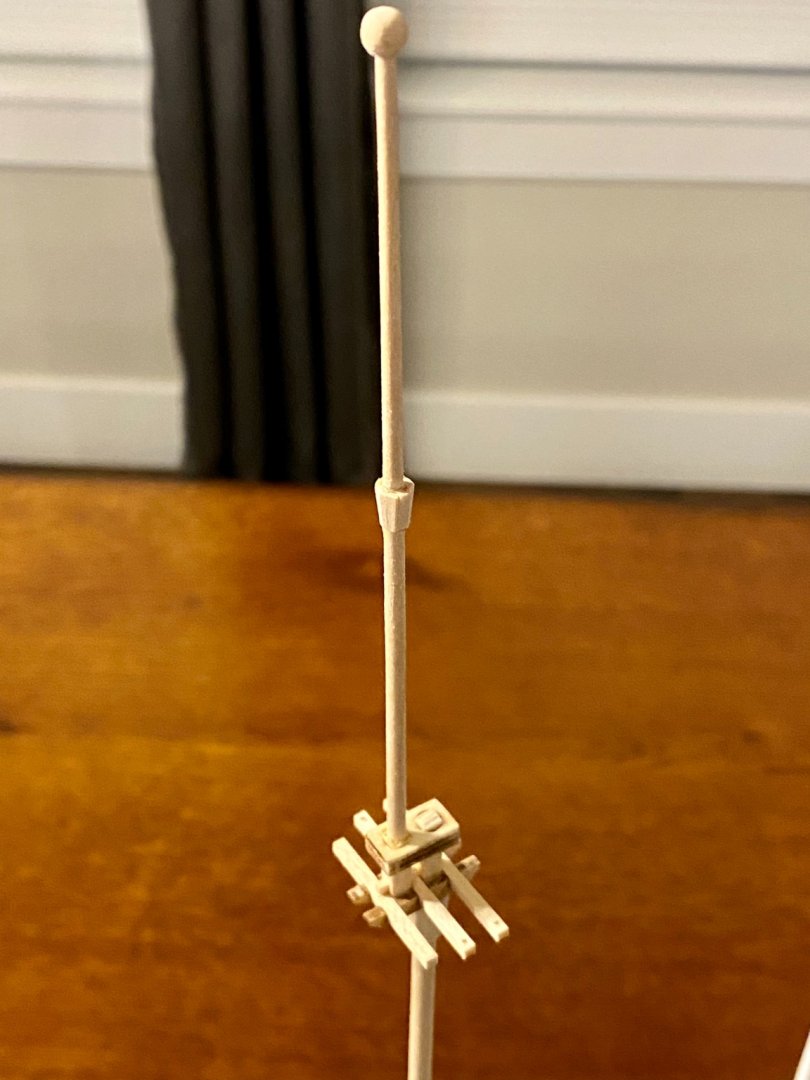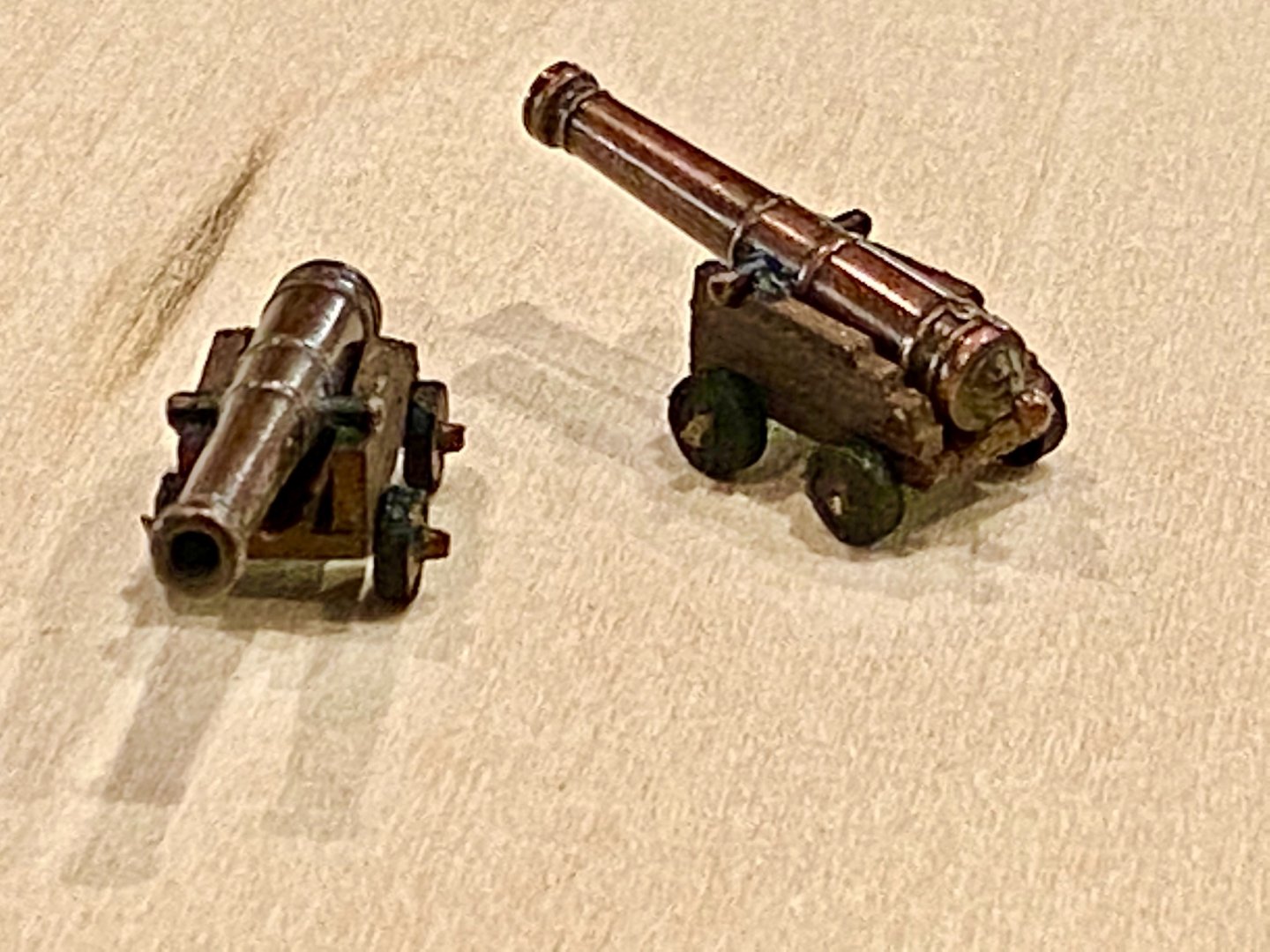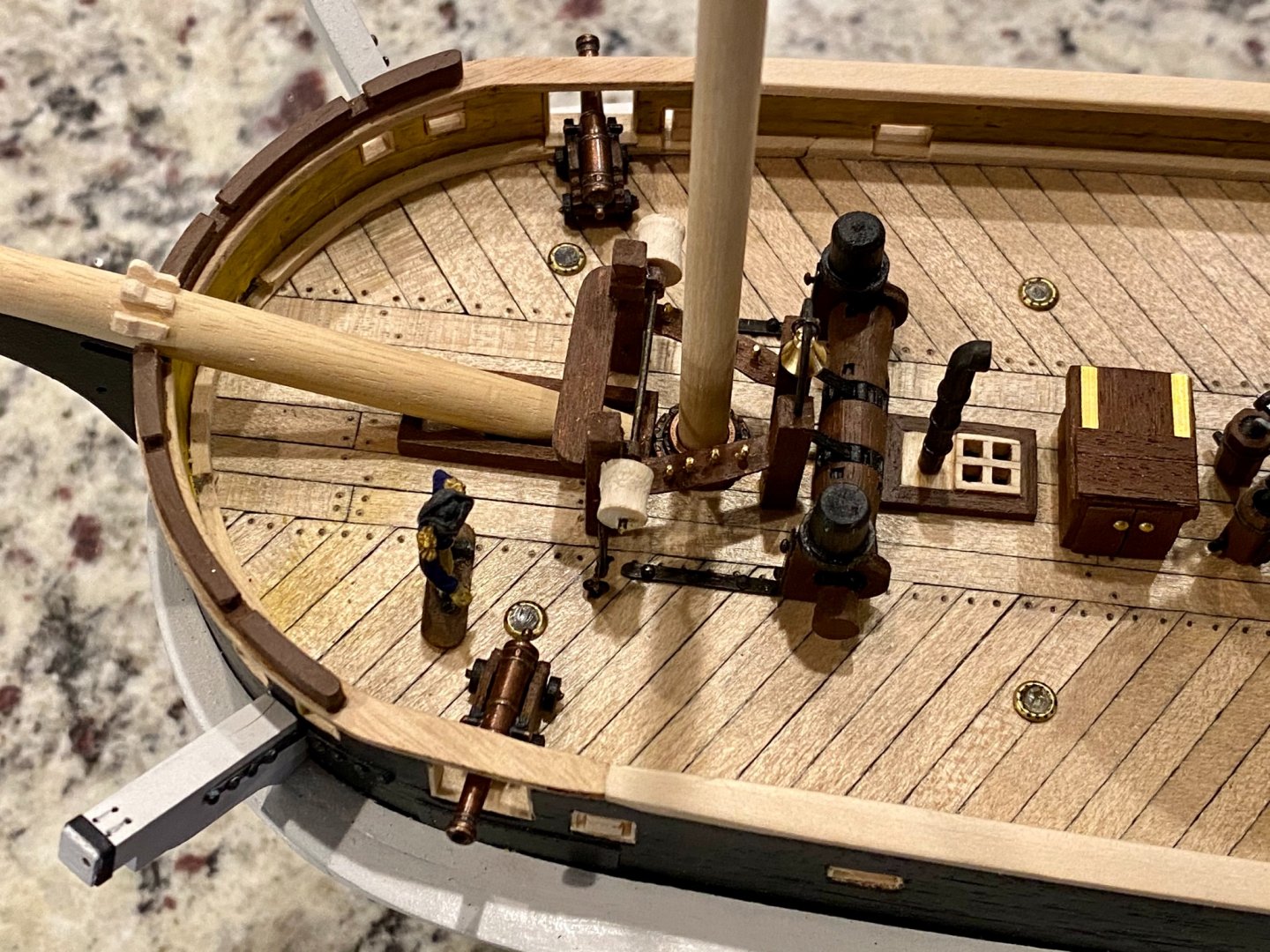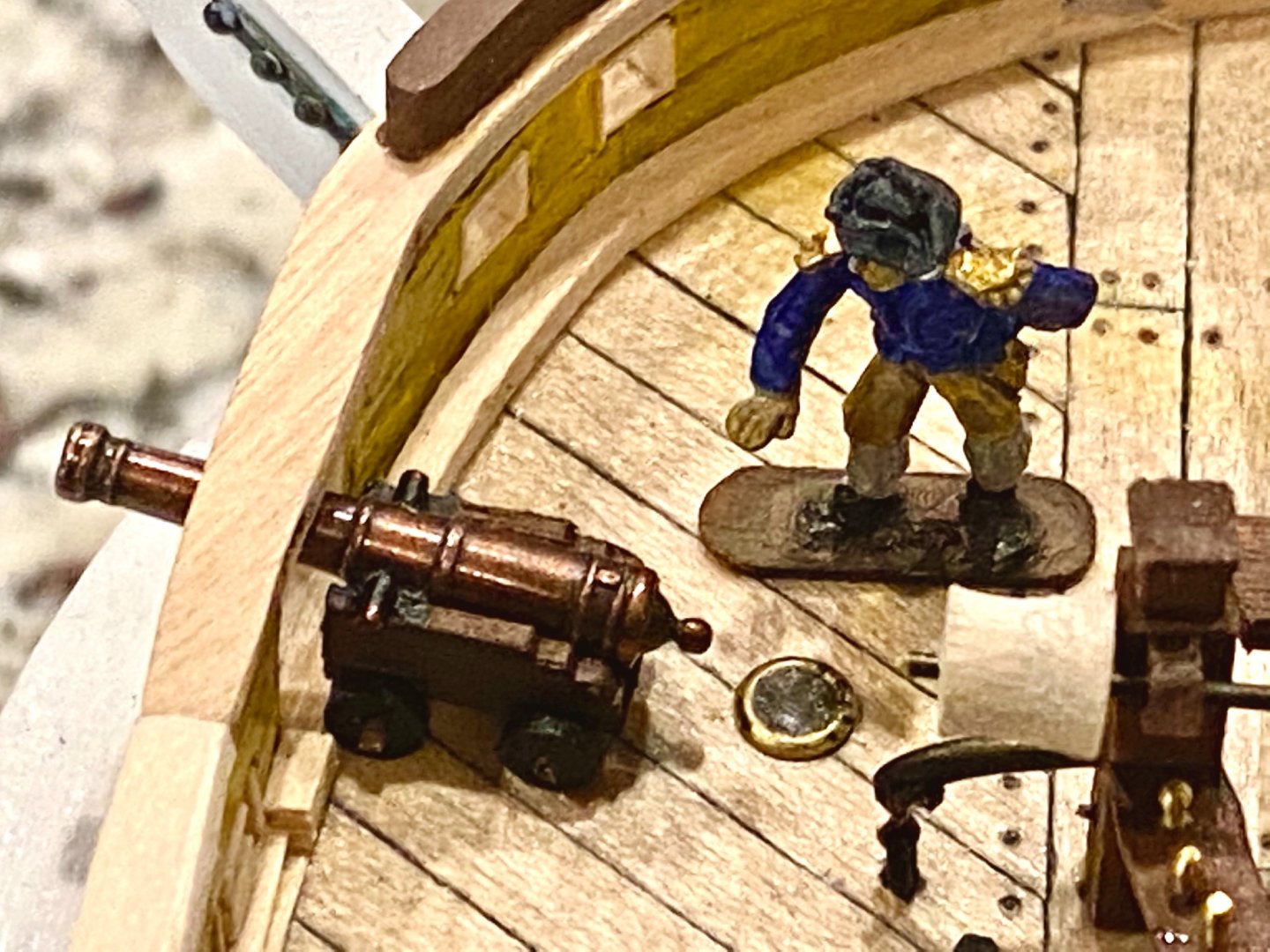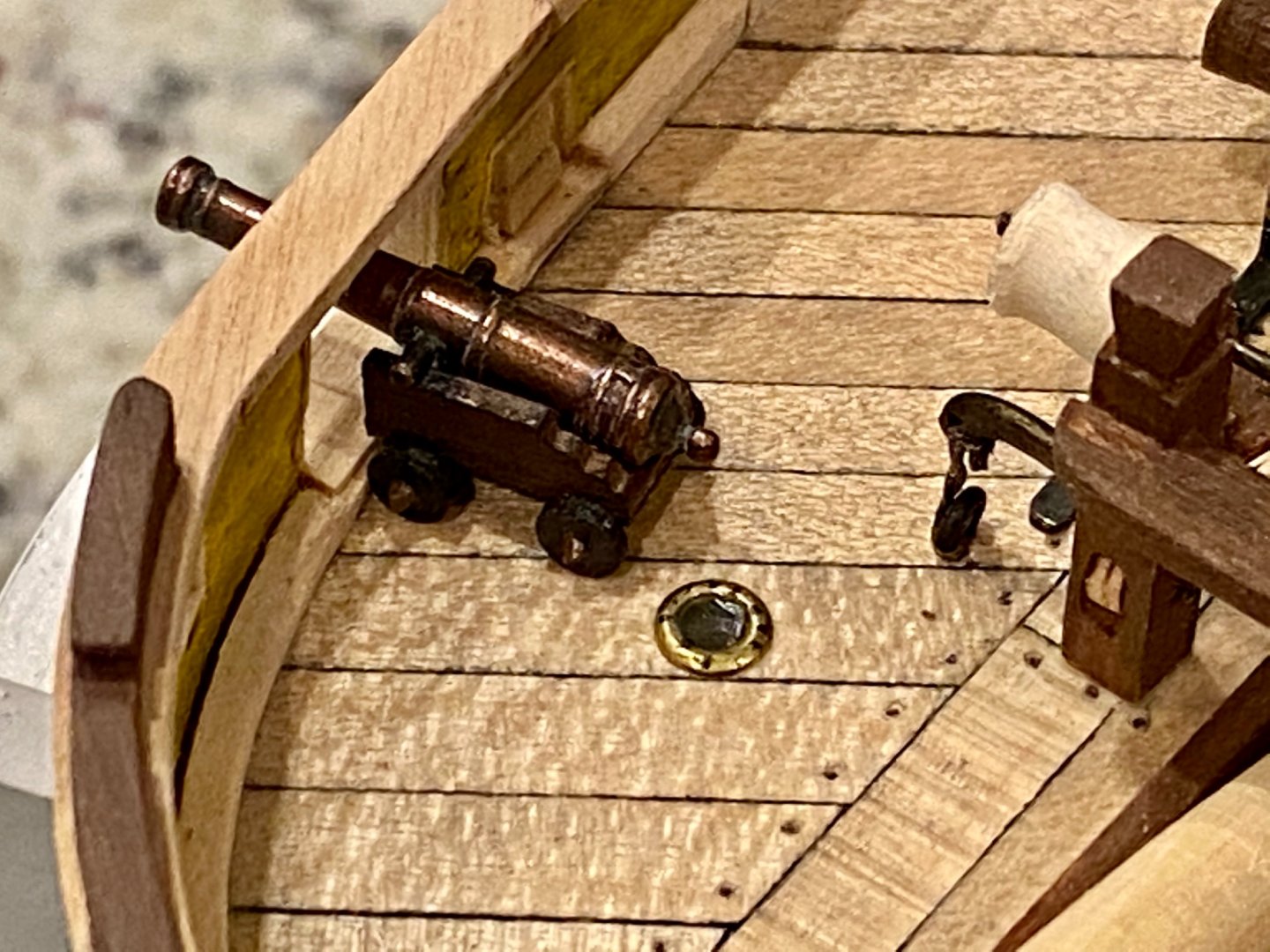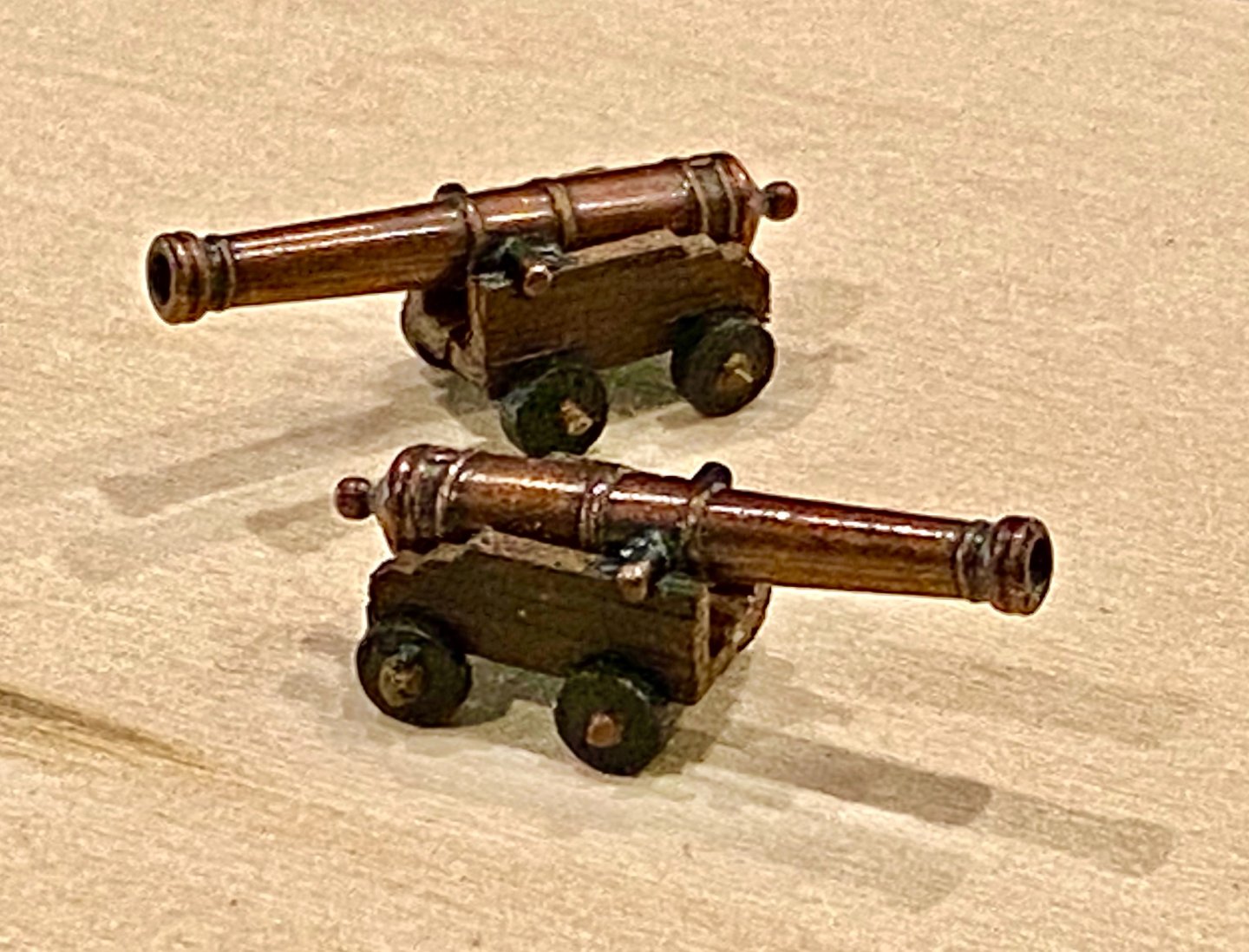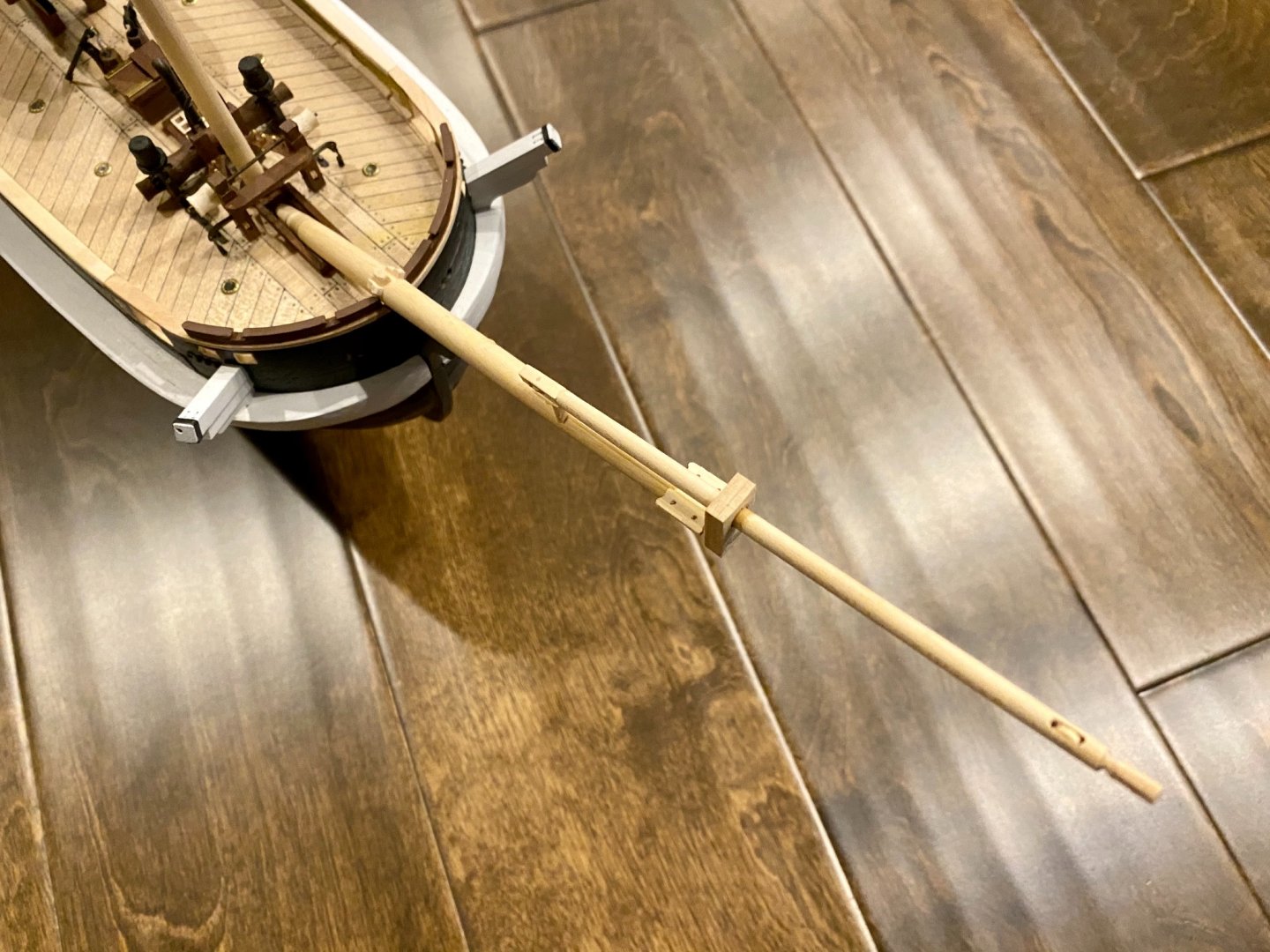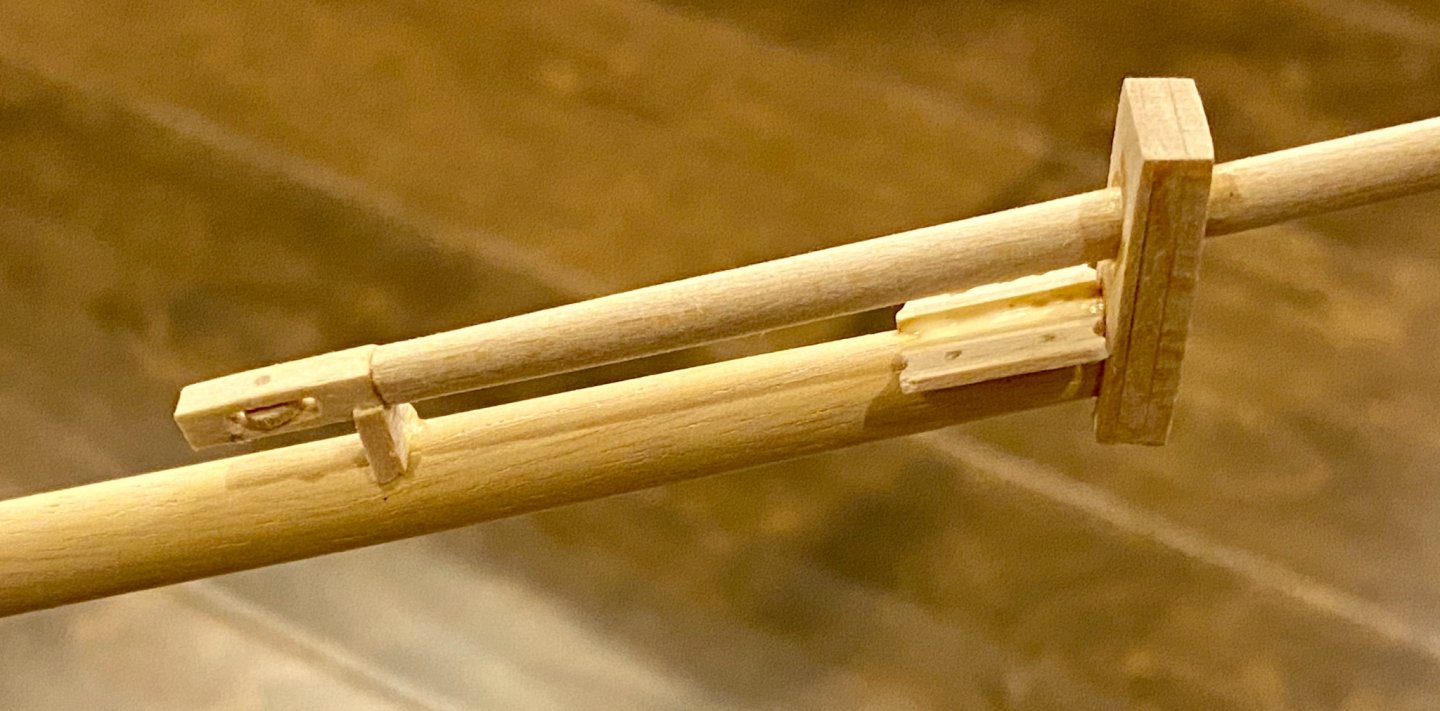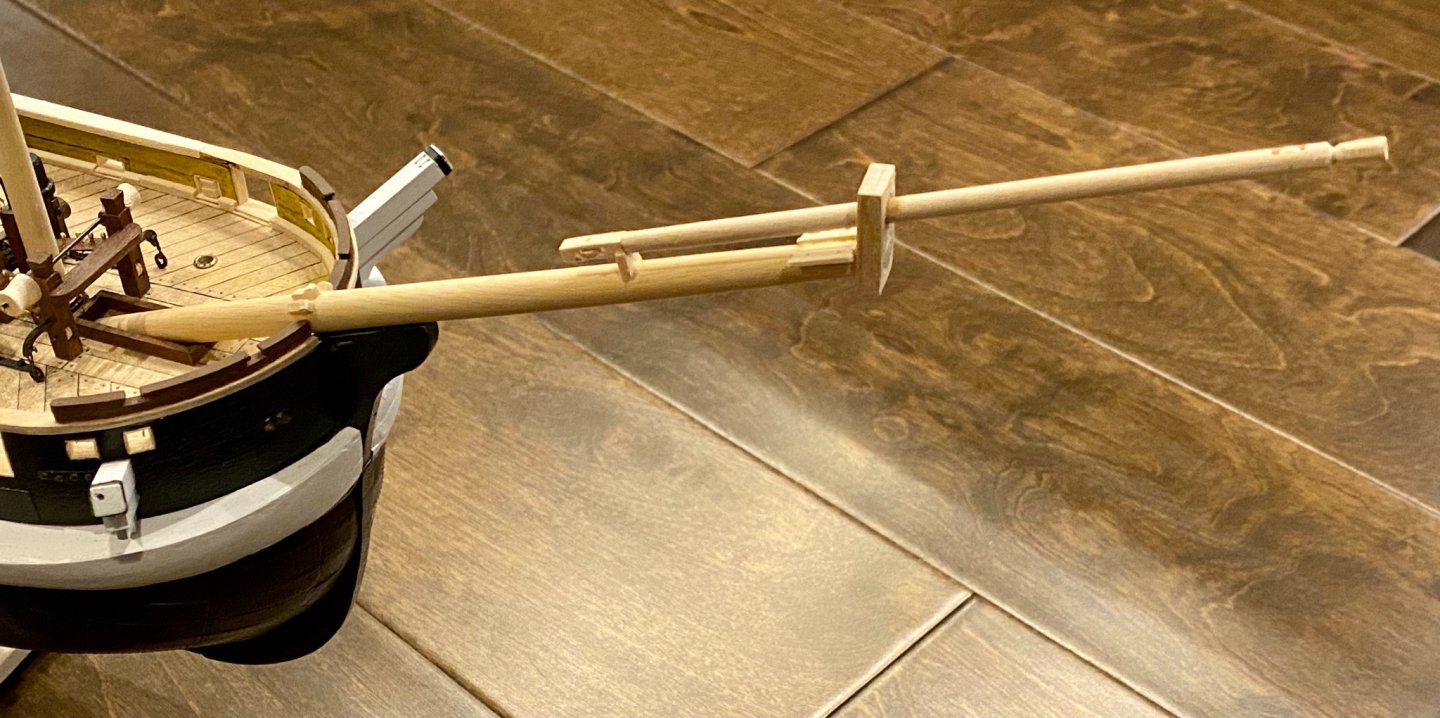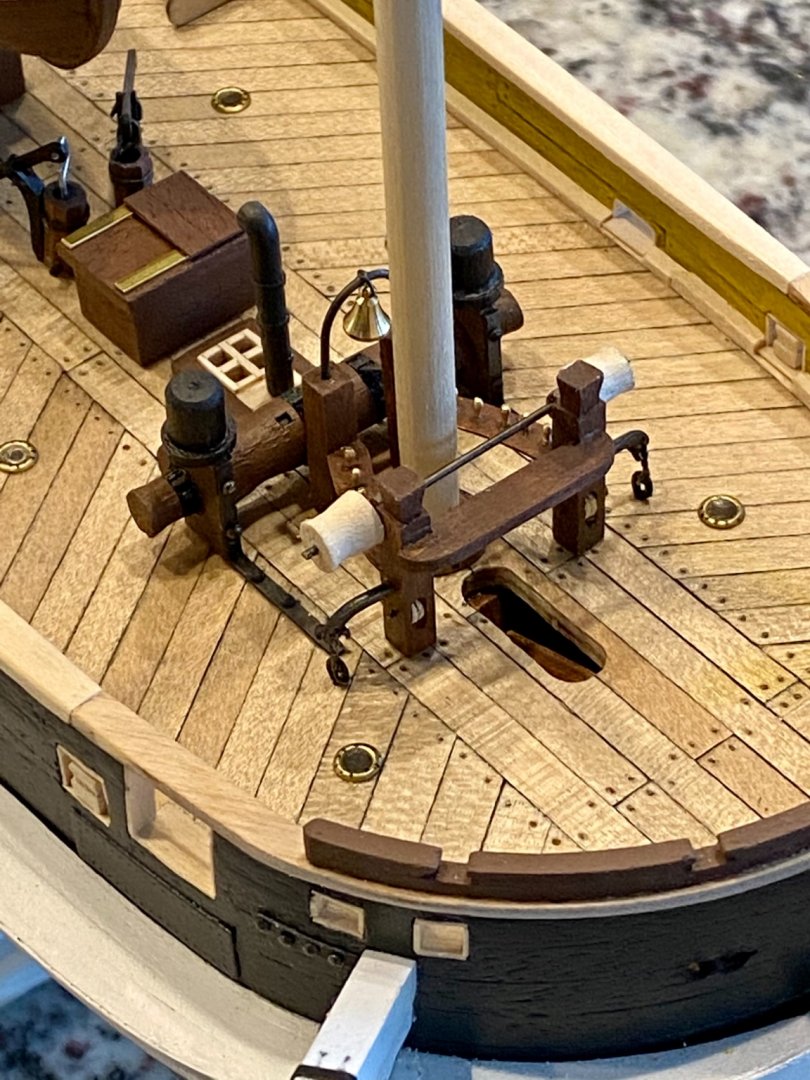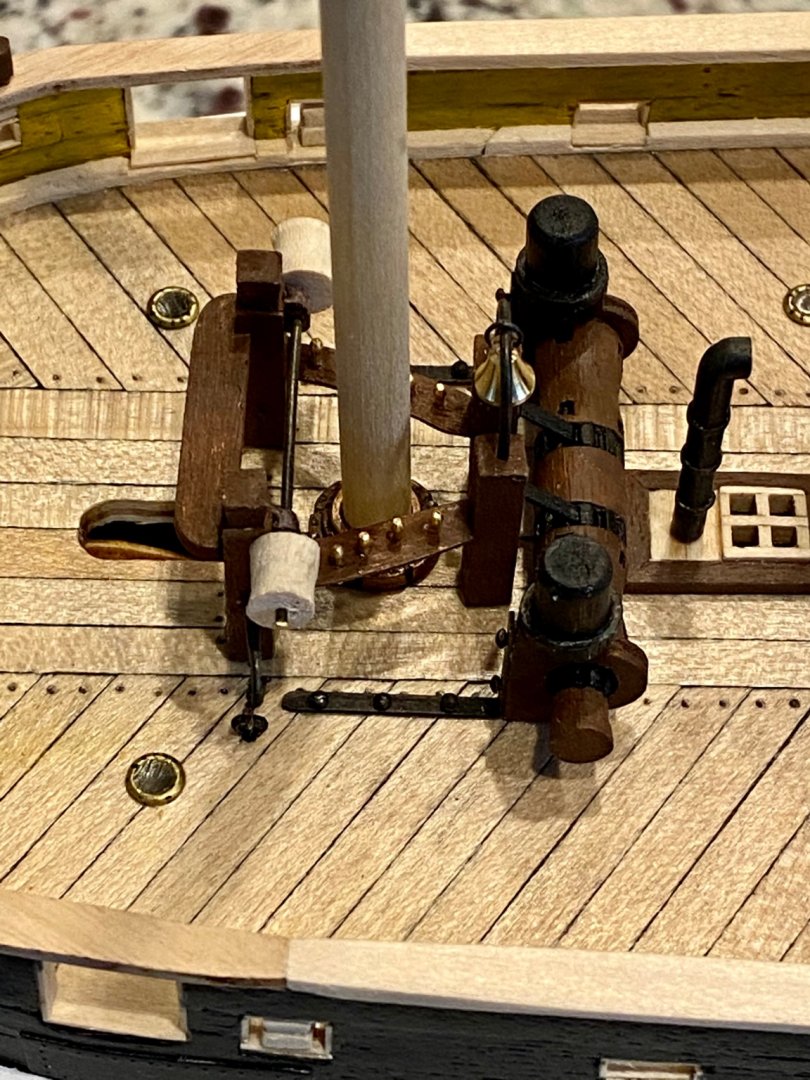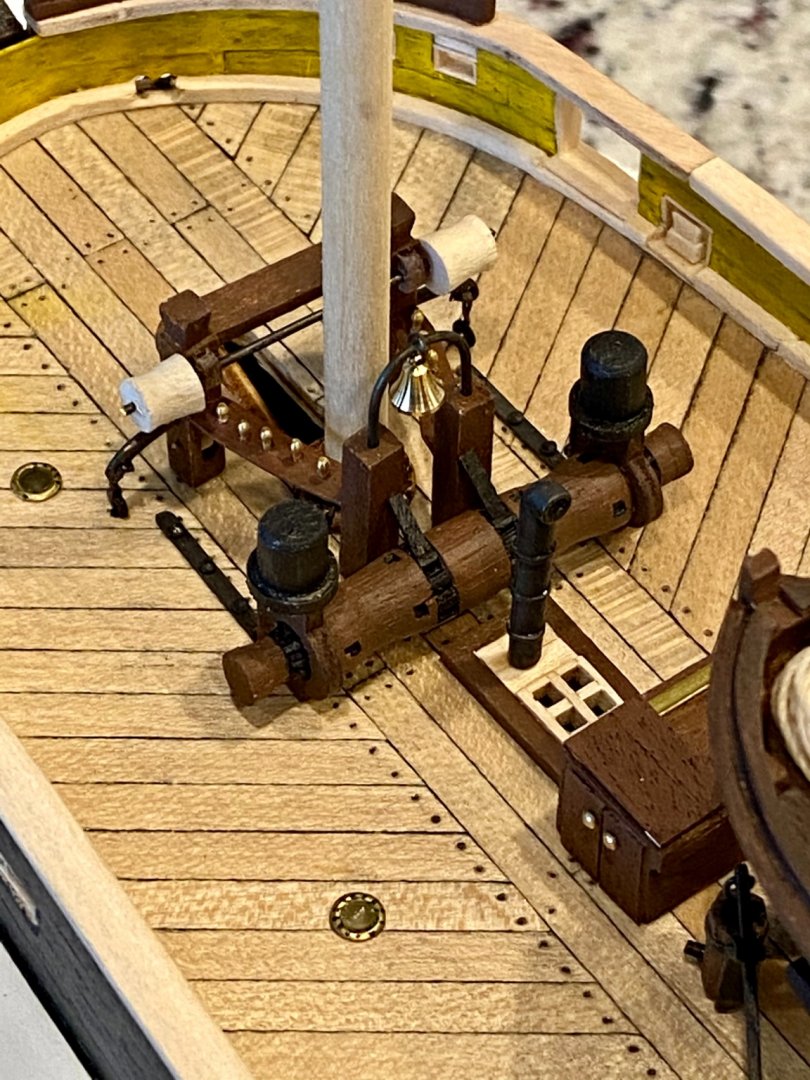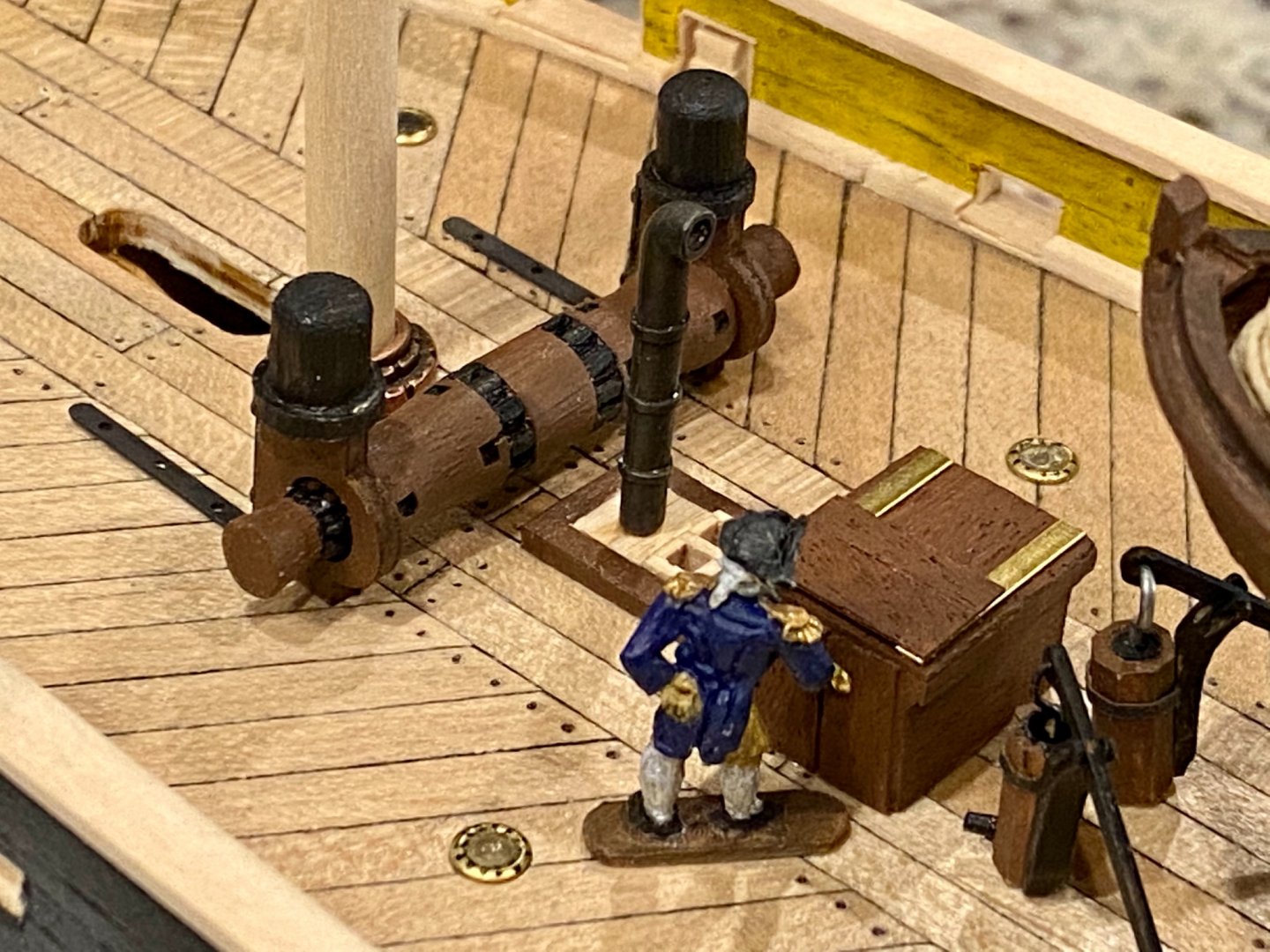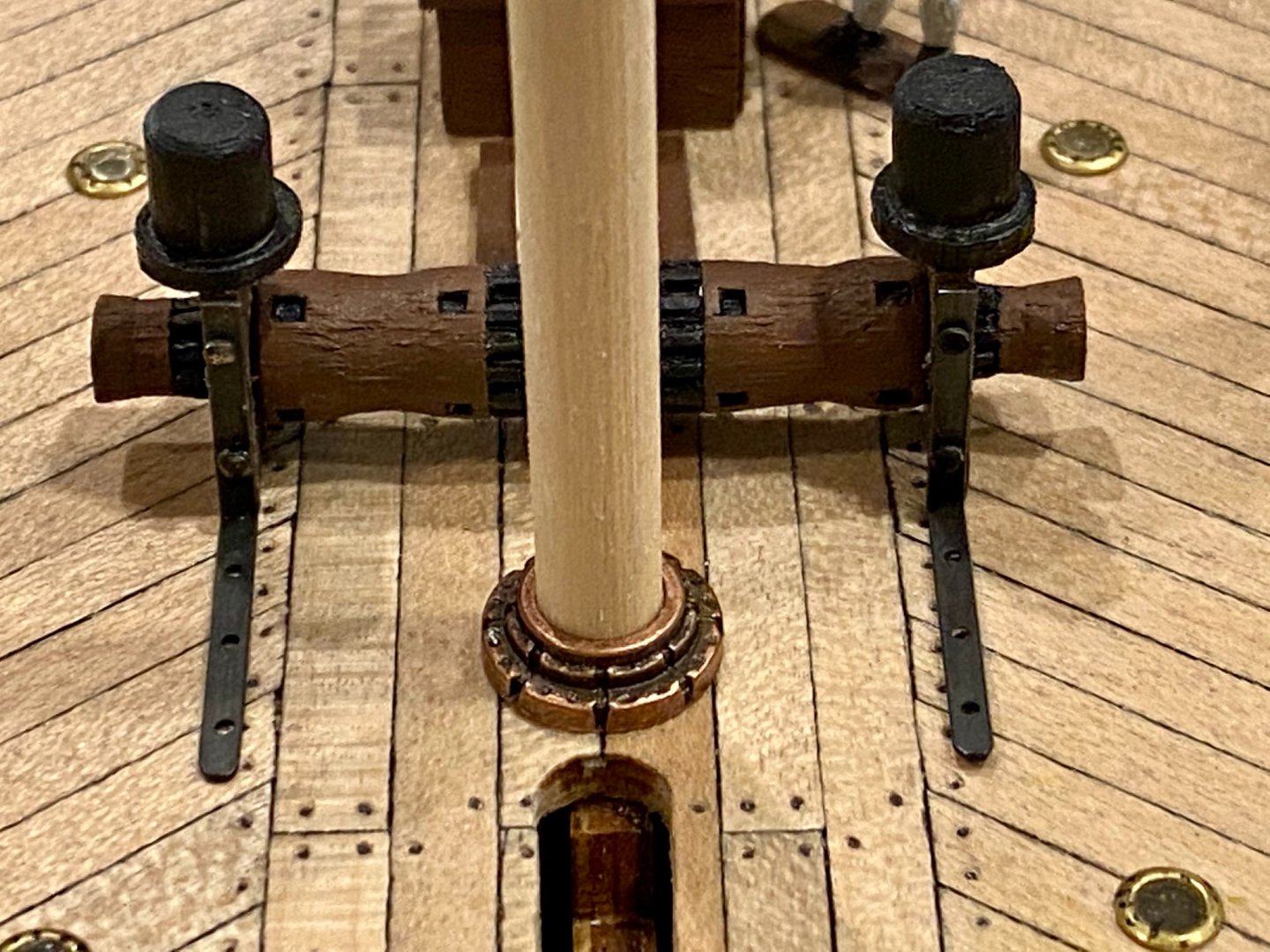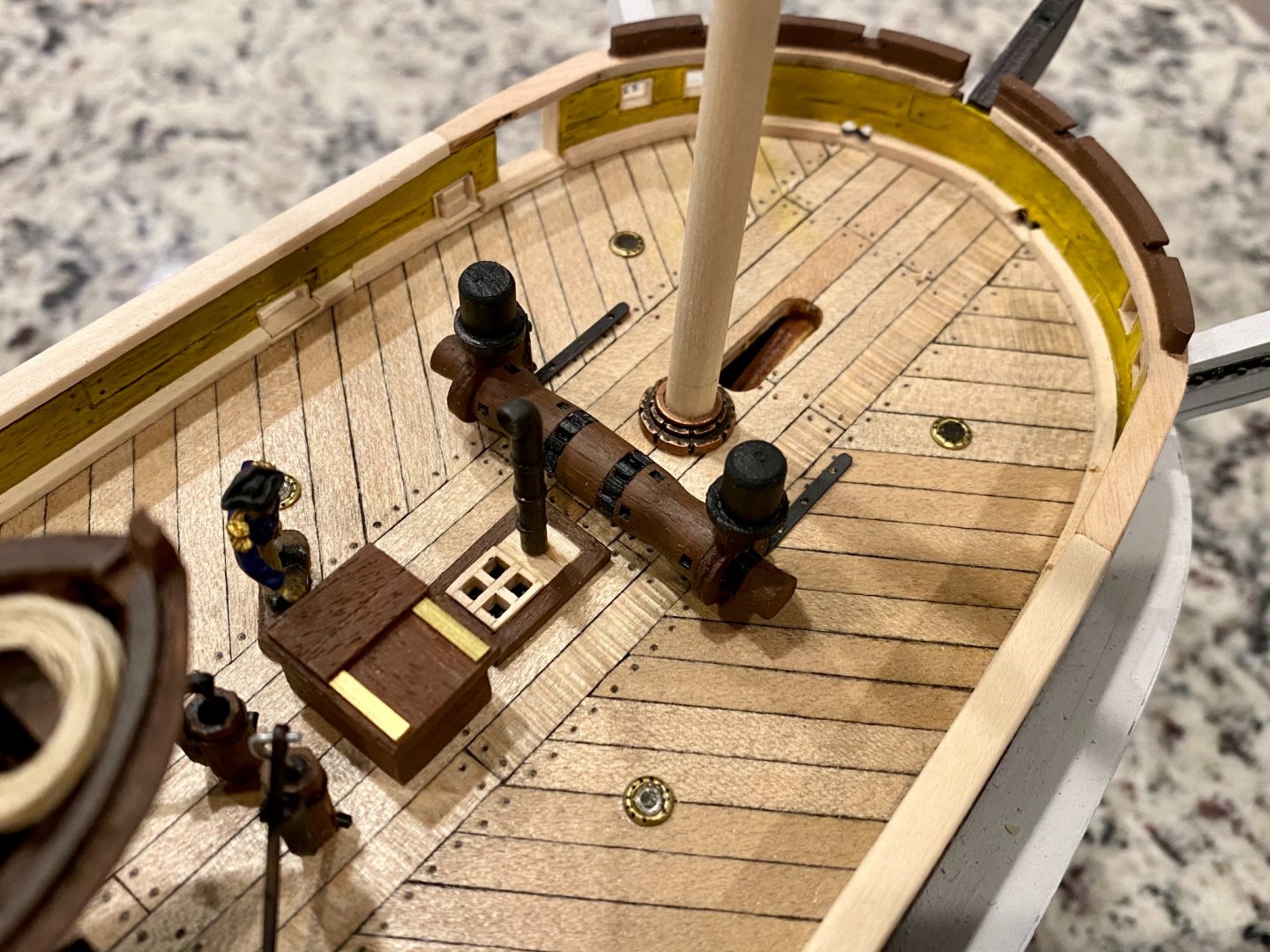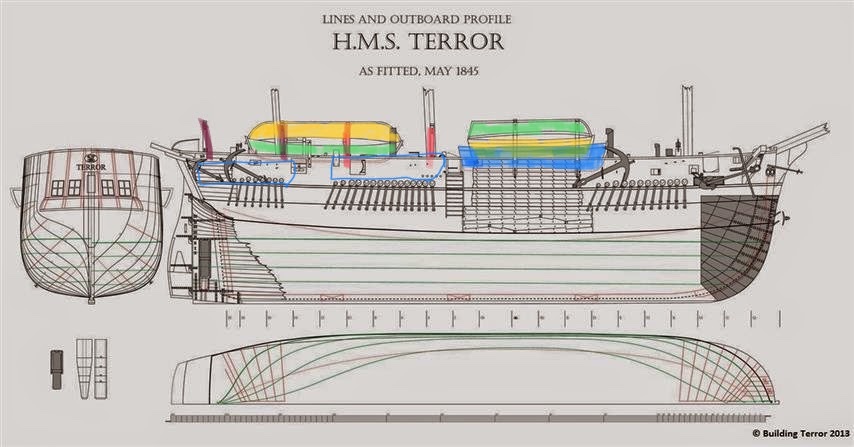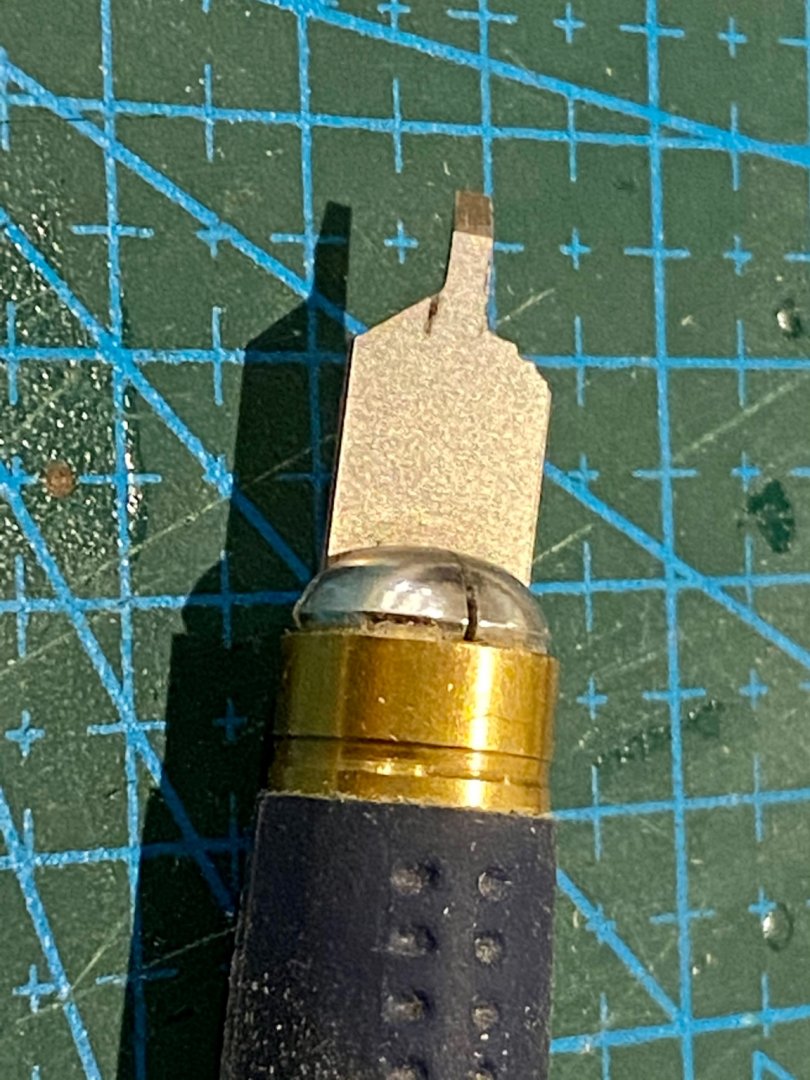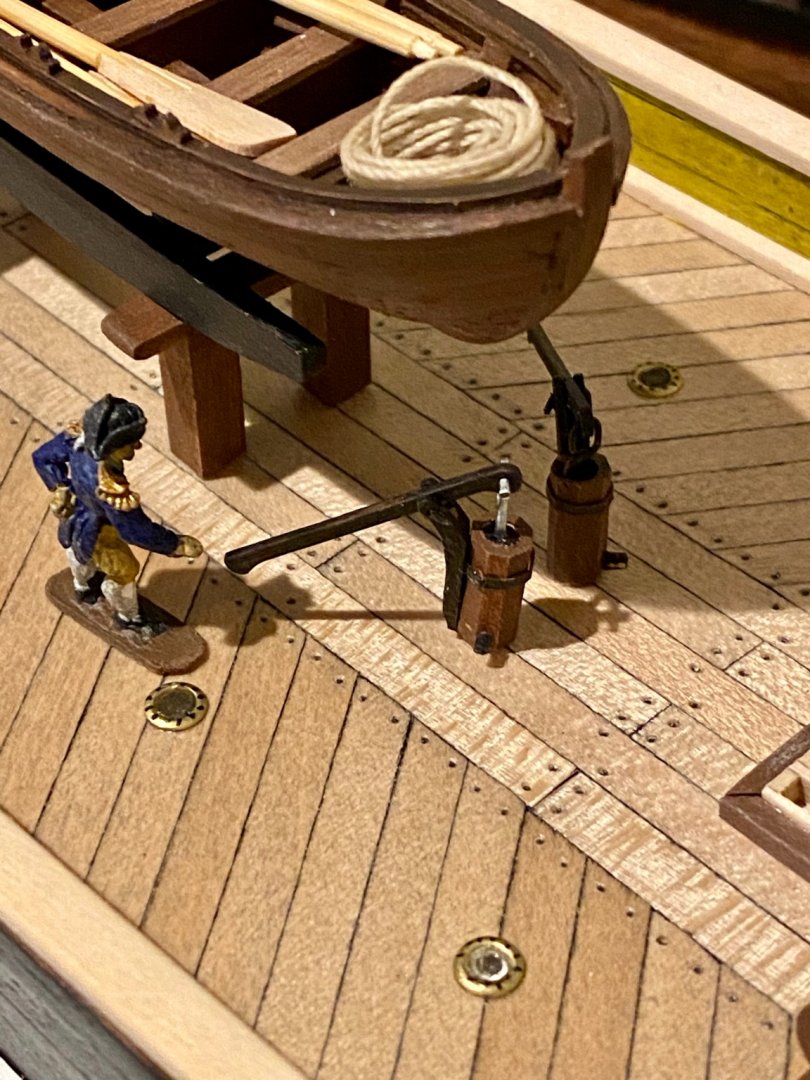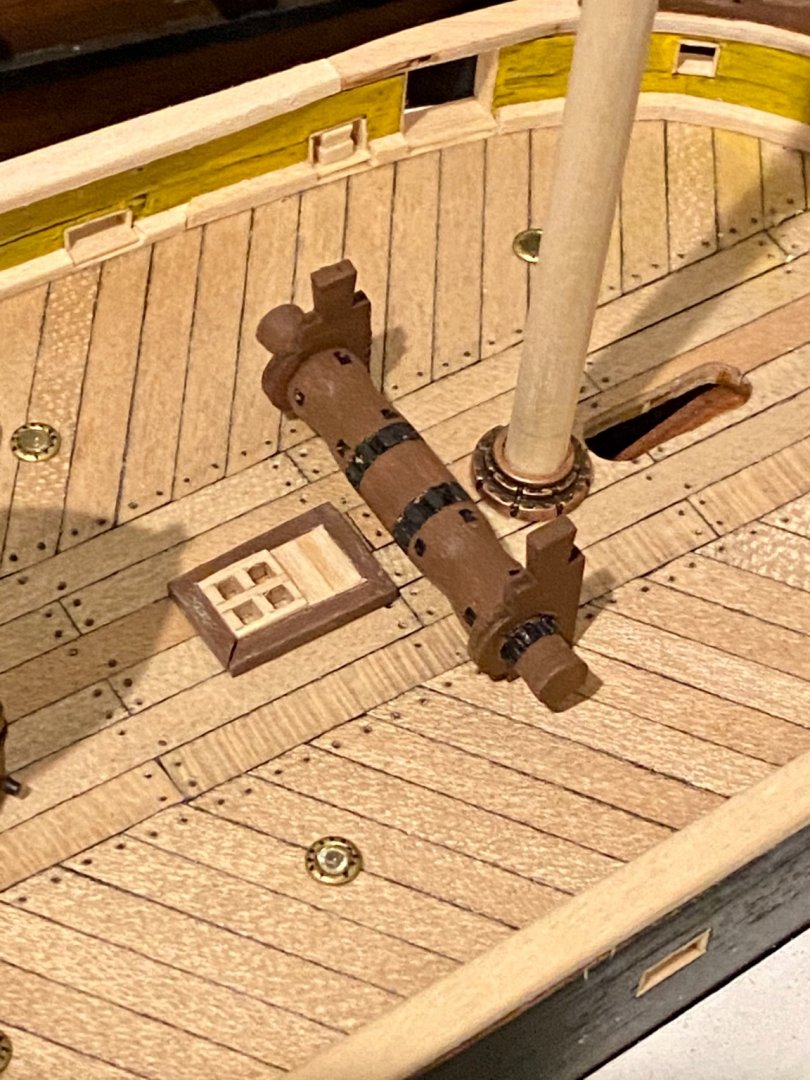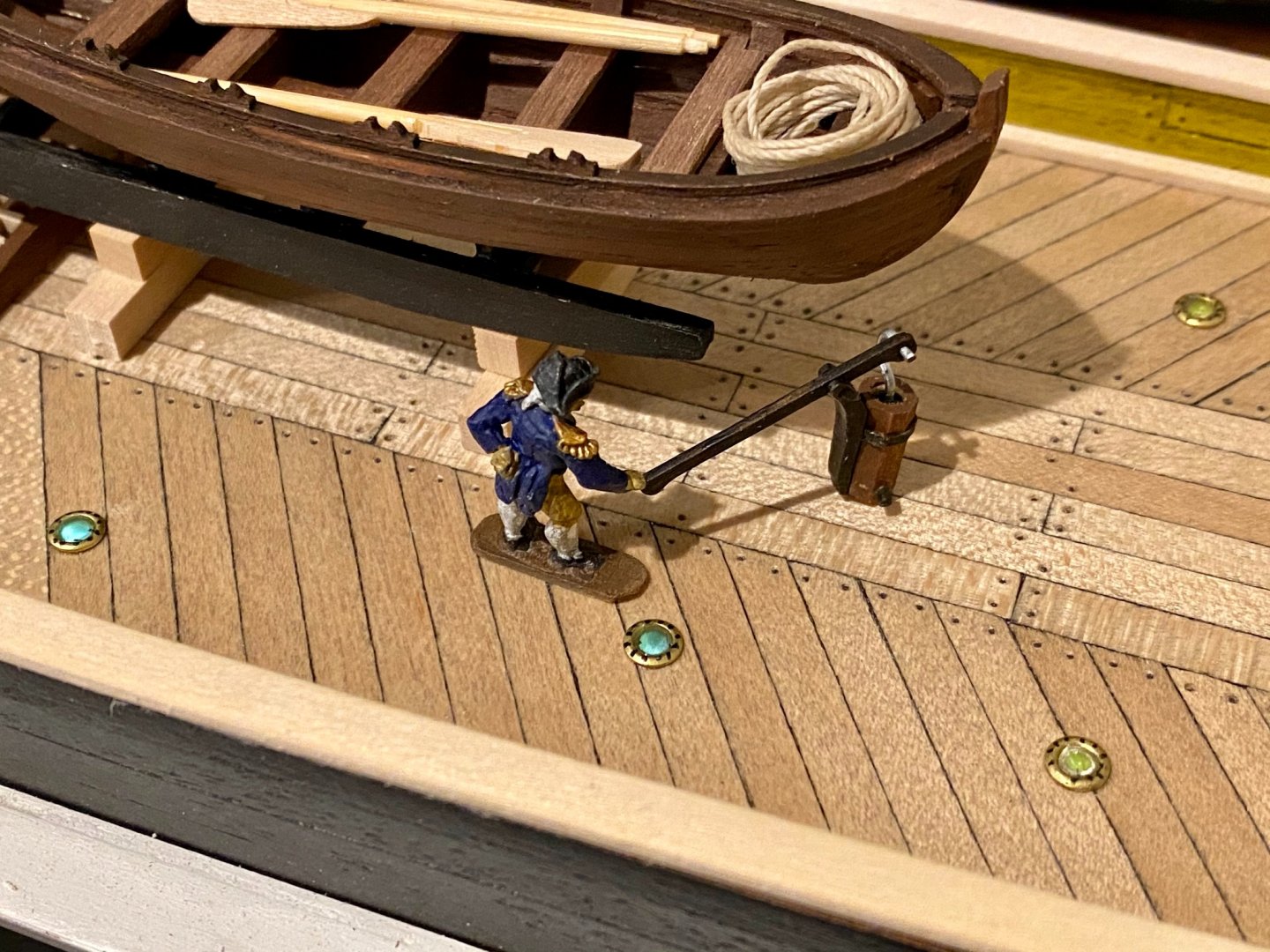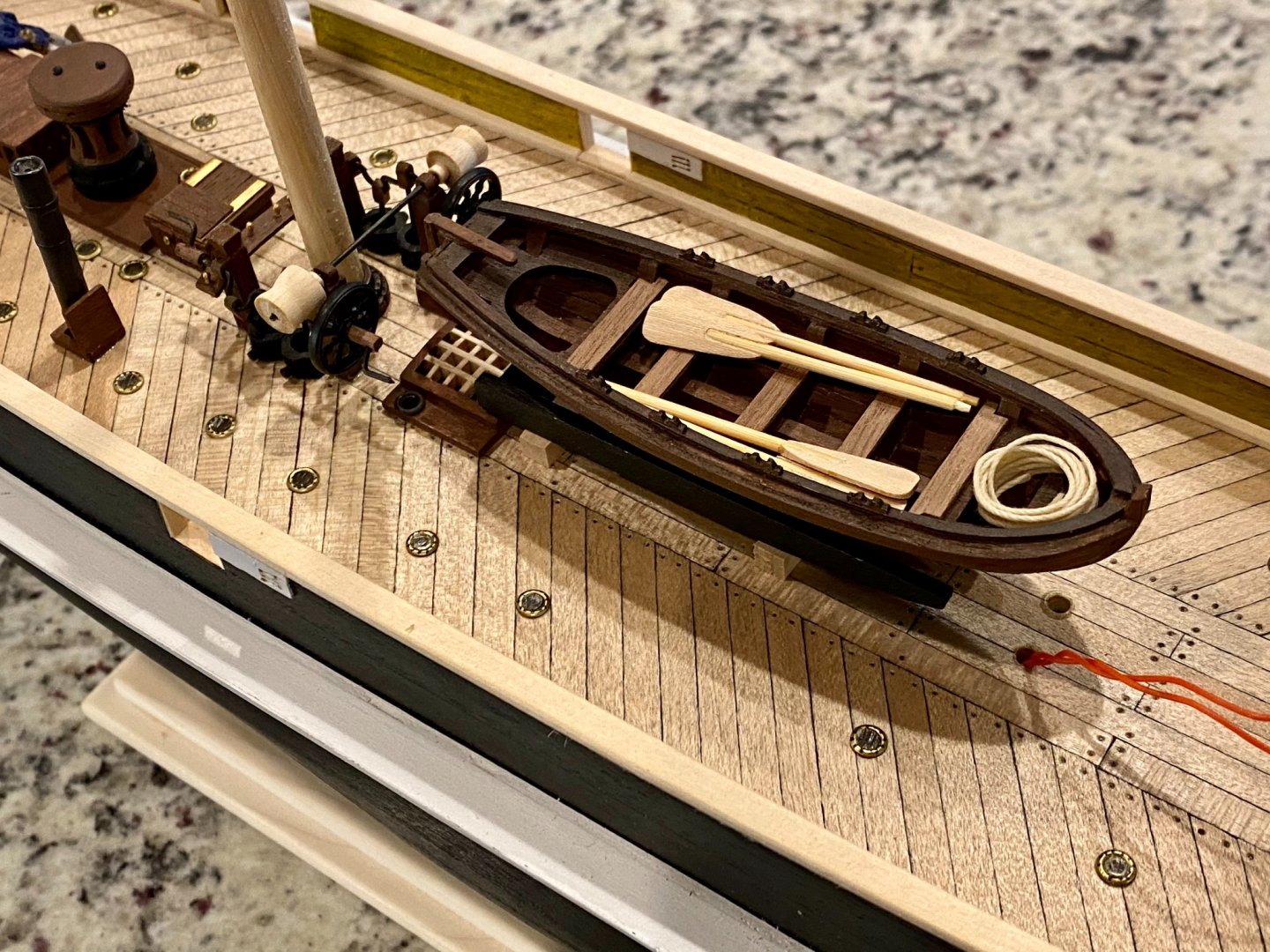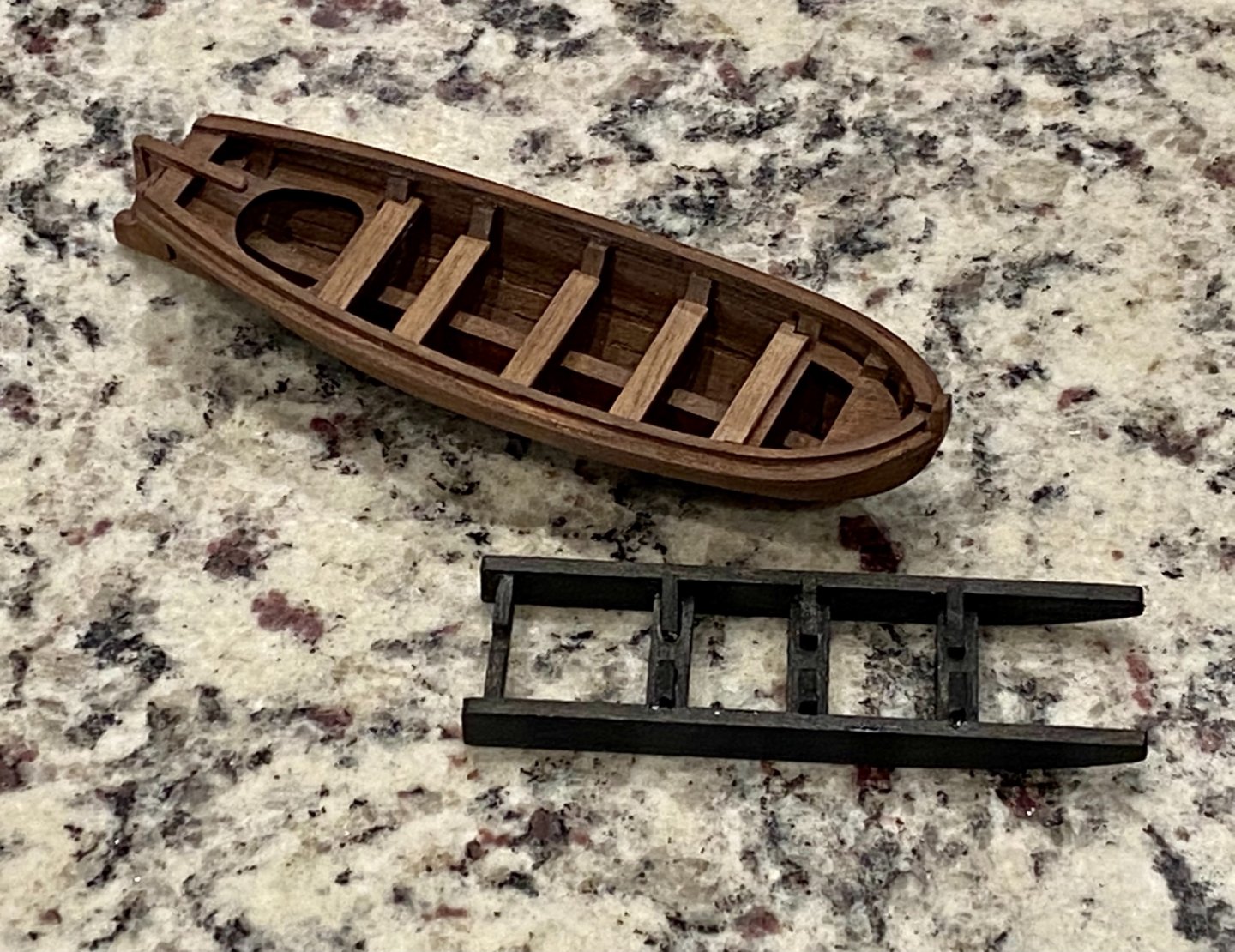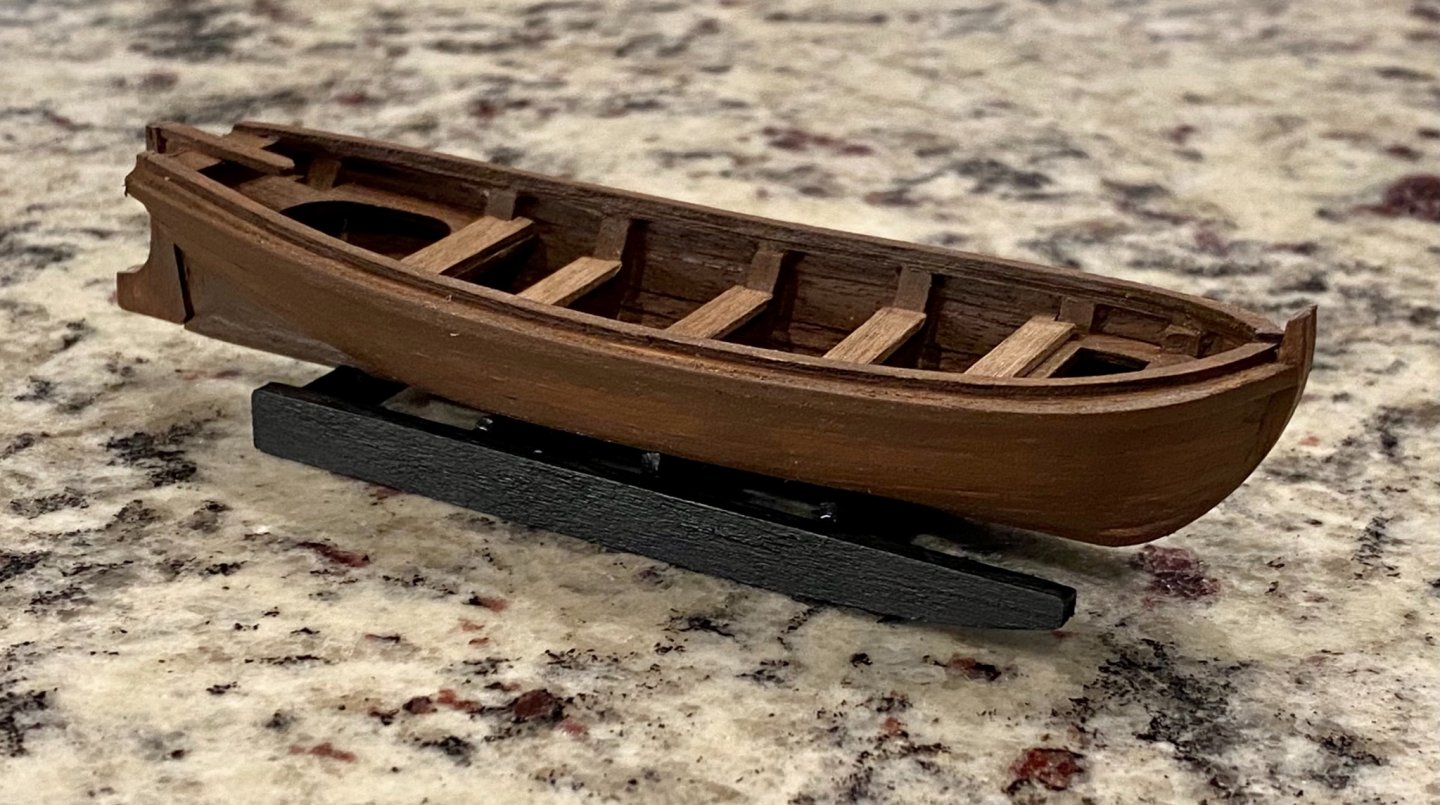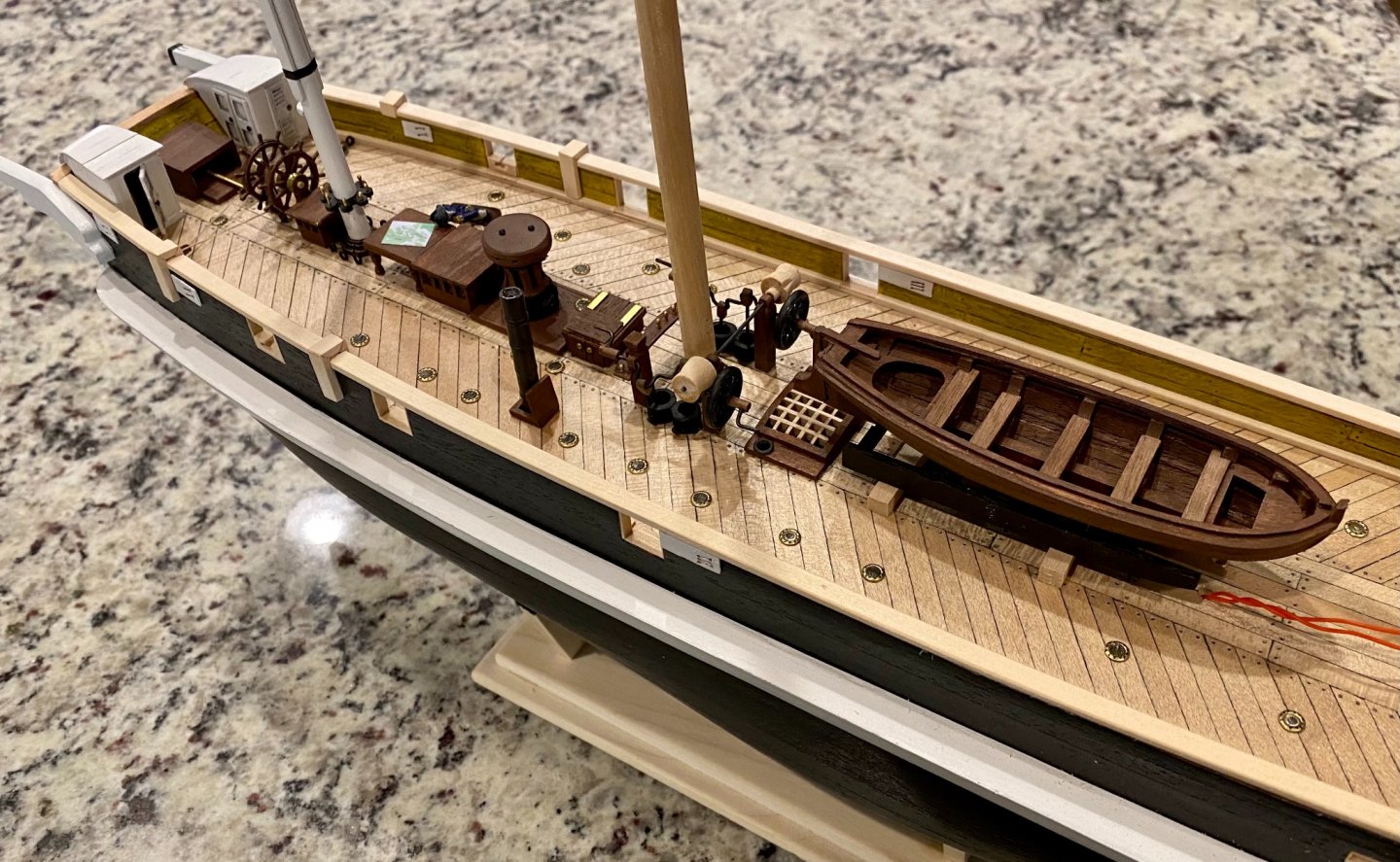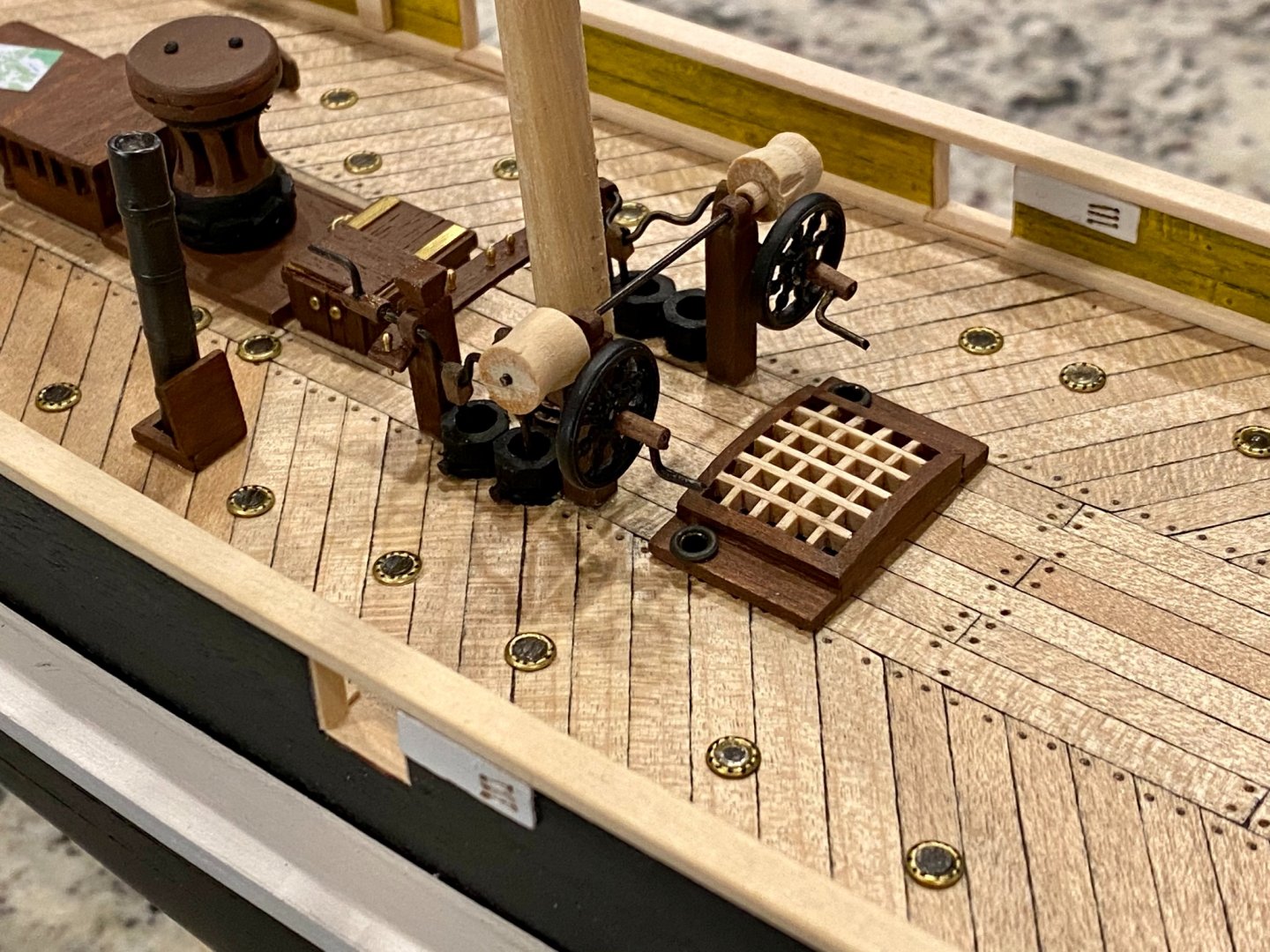-
Posts
645 -
Joined
-
Last visited
Content Type
Profiles
Forums
Gallery
Events
Everything posted by DanielD
-
A little more time today, so did a more chain work on the main mast following Lee’s observations as close as I feasibly can.
-
Good evening everyone. Here is today’s update. I’ve been putting off this project for some time, the creation of the chainplates. I’m not using the ones that came with the kit as they are just simple wire representations. I purchased some pre-made chainplates, that of course requires modification 😬 and I want to stay consistent using chemically tinting the metal (which is a real pain), but looks good in the end. Just time consuming. Only about 60 more to do... what was I thinking.
-
Thank for your positive comments! This has been such a fun build, but I’m not even close to the finish line. I have learned so much about ships and ship building thanks to Keith (clearway) and Kieth S! I don’t bother getting out my big camera and gear for this project, I just use my iPhone with no special lighting. I hope you have as much fun as I am having with this wonderful historic ship. There is so much to learn and discover with the HMS Terror.
-
Hello all, I’ve not posted in awhile as I’ve been working on the main mast. It’s taking a lot longer than I thought! There is so much to build, I had no idea. I’ve been using Lee’s book as my main reference, but also a big thanks to Keith and Keith S for their build logs to help me along the way. My mast is not nearly finished, but the main structure is set.
-
The HMS Terror and Erebus each had on board two 6 pound signal cannons. Here is my attempt to pay homage to those cannons. They sure are tiny!
-
Today in the shipyard I took on the task of the bowsprit. Using the dimensions from Lee’s book, this is what I came up with. And thanks Keith for your help setting me straight.
-
Keith, thank you! I missed that detail. When I went back and looked, it was right there. Next question, I’m having trouble figuring out what is the overlap between the bowsprit and the jibboom. Part of my problem is that I don’t know the terminology, but I’m learning. Thanks for all your help! Update: I found the reference to the distance I’m looking for “one third the length of the jibboom from the cap.” My jibboom is 134mm, so I will install the saddle at 45mm from the cap. Problem solved!
-
Keith and Keith, I started planning my bowsprit and jibboom, basing my information on Lee’s book. I am using the dimensions for the Frigate 10th Class. My first conundrum is the bowsprit per Lee’s book should be 29’ 0” (25.4mm*12”*29’/75scale=118mm); however, the kit plans lists 162mm as the length. This is a large discrepancy, 44mm! The jibboom however is right on, according to Lee, should be 33’ 0” (25.4mm*12”*33’/75scale=134mm) and the kit lists 130mm, just 4mm difference. So...build per Lee’s book? Other things to add/change 1) the heel of the jibboom is squared not round, 2) add sheaves to both ends of the jibboom, the heel sheave was cut athwartships and the outer end cut up and down, 3) create a nice looking rigging stop at the outer end of the jibboom (see attached images). Well, I’m thinking of following Lee’s book, I’m just a little worried about the 44mm discrepancy. How much will this affect other things on the boat.... Upon further evaluation, is seems that almost all classes of ships have a shorter bowsprit vs jibboom (jibboom around 5-12% longer), so the Terror kit must be wrong as it has a longer bowsprit by almost 25%.
-
Keith, thanks for the kudos! I ordered a new bell from ageofsail.com (SHIPS BELL IN POLISHED BRASS (6MM, AM4140/06)). As far as reading glasses, they are a must!
-
For a rare snow day in the great northwest, I found a little time to finish the deck works around the foremast.
-
I would just have the two wires come down through the false keel, on the centerline of the ship, leave them dangle until the planking and sanding is finished. Then install the modified keel with the plates or easier yet, install a two brass display pillars to hook the wires to. Rather way, I’d do the planking and sanding first to get a good smooth hull finish. Need to be careful working around the wires, don’t want to nick or accidentally cut one off, but would be easier than trying to sand down the hull with the keel in place.
-
I had this same idea, but I was already committed to my current design. You should be fine creating contacts like this to feed power into the ship. Go for it! I’ll follow along
-
Today’s shipyard tales include finishing the forward hatch, installing a smoke stack, and finishing the forward windlass. It’s not bolted to the deck yet, but will be as soon as I have the rest of the hardware in place.
-
I think I figured out where all 12 small boats were placed and leaves the davits at the stern free to work on the rudder and propeller. I will apologize in advance if I don’t have the correct terminology for all the locations 😃. Here we go, mid ship between the fore and main mast with another stacked on top (forward green <top> and yellow <bottom> boats in the image). On the timber frame between the main and mizzenmast another pair right side up <green> (as seen in Matthew Betts work), with another pair upside down on top of those <yellow>. That makes six. Then there are 3 pairs of davits along each side of the ship, the forward pair with the bumper you figured out <highlighted blue> then 2 more pair, aft of those (in red of the attached image) with my drawing of boats in blue. So each pair of davits can hold a small boat. So three small boats hanging on each side of the ship, for 6 more, thus a total of 12 small boats. Thoughts?
- 206 replies
-
Keith very nice work figuring this out! It makes so much more sense now... Now the quandary, do I build more small boats? With one hanging on the stern davits, one upright mid ship, one upside down on top of that, two on the stern racks above the capstan, two over the side on the davits near the stern, and now two over the side mid ship. Well, that accounts for nine of the 12. That’s progress! I like the small boats so I’m inclined to build them...gives some perspective how massive this expedition was.
- 206 replies
-
Keith, I took a newish square blade and ground it down to just 2mm wide. Then just cut square holes and popped out the plug. Worked well 99% of the time.
-
Well, didn’t get a lot of time in the shipyard this weekend, but did finish the second hand pump and a good start on the forward windlass. If you ask the admiral, I spent all day on that one little piece. 😉
-
I’ve spent a long time planning and thinking how I would turn a simple hand pump into the switch that turns on/off the the lights and the steam engine driven propeller. Today those hours of planning worked out! The following image and video shows the function of the now working switch. Oh happy day! IMG_2478.MOV
-
While building this small boat, the instructions are a little shy on the length of the oars, actually, the instructions just say craft an oar. I went looking for 1800’s oar examples and I came across a formula on how to set the length of the oar. I had no idea that such a formula existed. 1/2 the boat beam, times 3 plus 6”. I converted the 6” to mm and in my scale (1/75)...6*25.4/75=2mm. The beam of my small boat is 32mm, so ((32 / 2) * 3) + 2 = 50mm. I made the length of my oars 50mm, and I think they match the scale of the small boat perfectly.
-
Today in the shipyard, I took a break from the Terror and tried my hand building a small boat. In this case, I built a Kolderstok small boat, which is nearly the exact size as the cast metal small boat included in the Terror kit. This will be the first of three life boats that I'll include on this model, well...maybe four, we shall see. Also, I built a sled, similar to the one that is described on Dr. Betts building Terror website. I think it will be a nice addition to this kit.
About us
Modelshipworld - Advancing Ship Modeling through Research
SSL Secured
Your security is important for us so this Website is SSL-Secured
NRG Mailing Address
Nautical Research Guild
237 South Lincoln Street
Westmont IL, 60559-1917
Model Ship World ® and the MSW logo are Registered Trademarks, and belong to the Nautical Research Guild (United States Patent and Trademark Office: No. 6,929,264 & No. 6,929,274, registered Dec. 20, 2022)
Helpful Links
About the NRG
If you enjoy building ship models that are historically accurate as well as beautiful, then The Nautical Research Guild (NRG) is just right for you.
The Guild is a non-profit educational organization whose mission is to “Advance Ship Modeling Through Research”. We provide support to our members in their efforts to raise the quality of their model ships.
The Nautical Research Guild has published our world-renowned quarterly magazine, The Nautical Research Journal, since 1955. The pages of the Journal are full of articles by accomplished ship modelers who show you how they create those exquisite details on their models, and by maritime historians who show you the correct details to build. The Journal is available in both print and digital editions. Go to the NRG web site (www.thenrg.org) to download a complimentary digital copy of the Journal. The NRG also publishes plan sets, books and compilations of back issues of the Journal and the former Ships in Scale and Model Ship Builder magazines.



